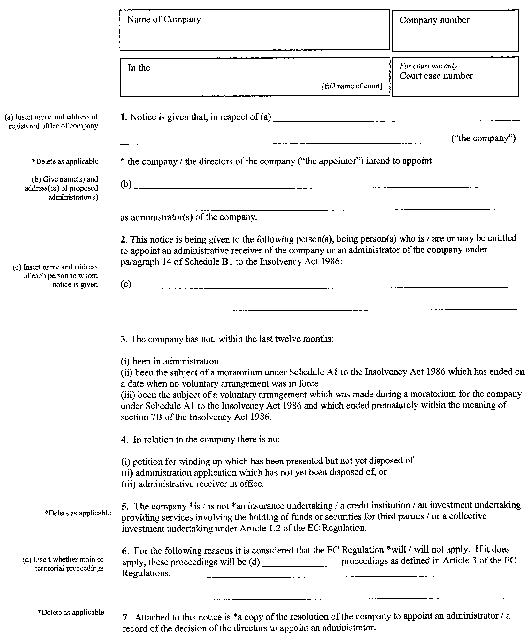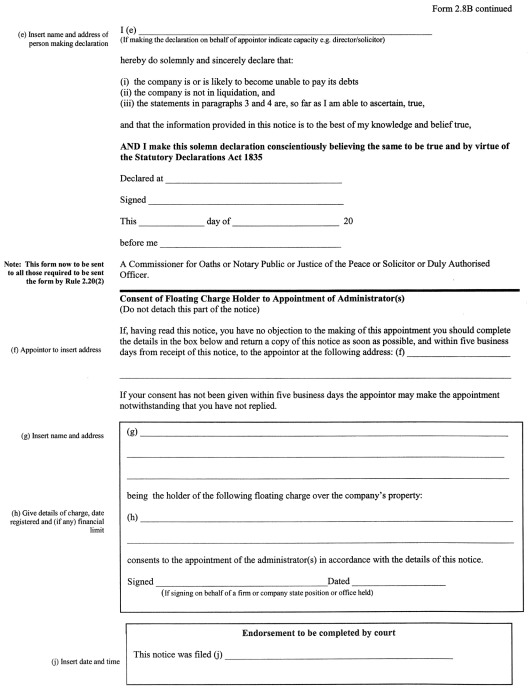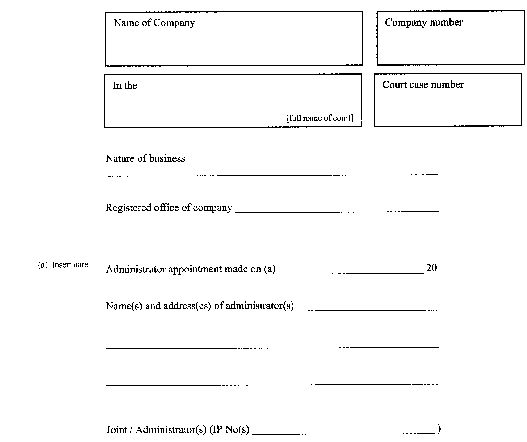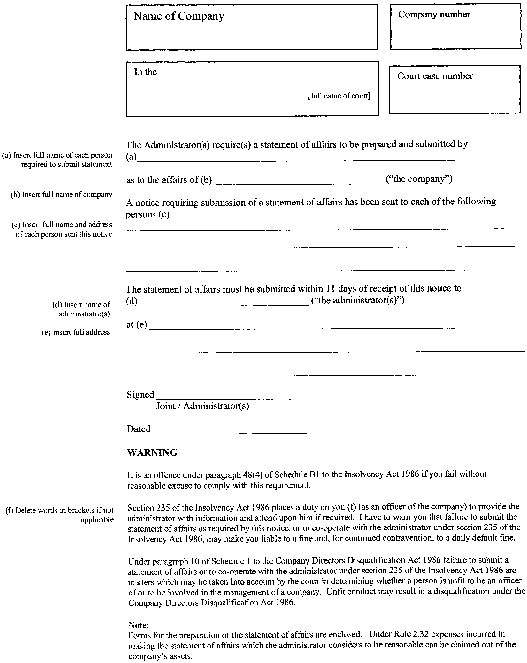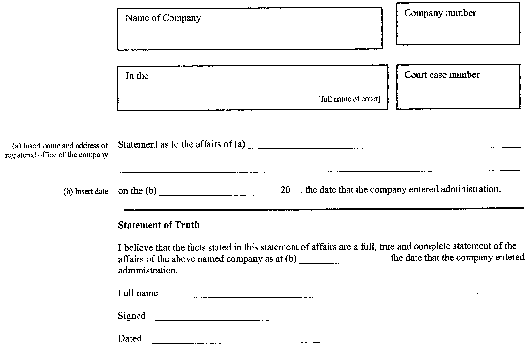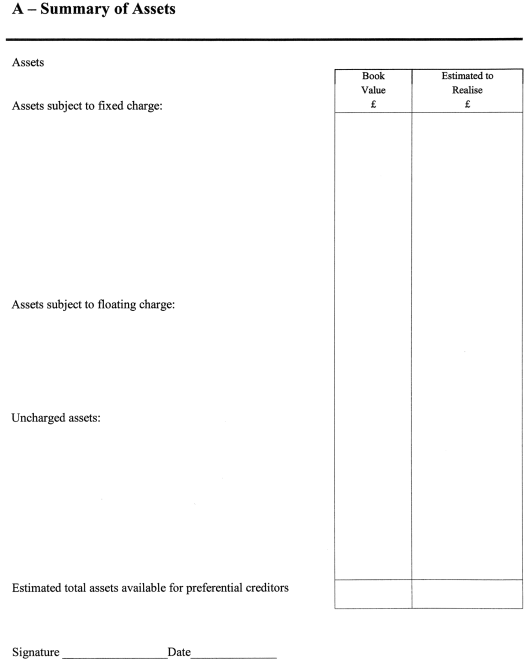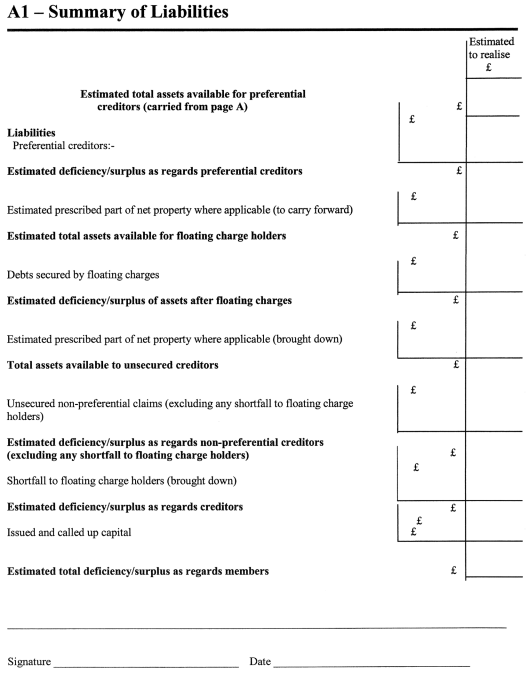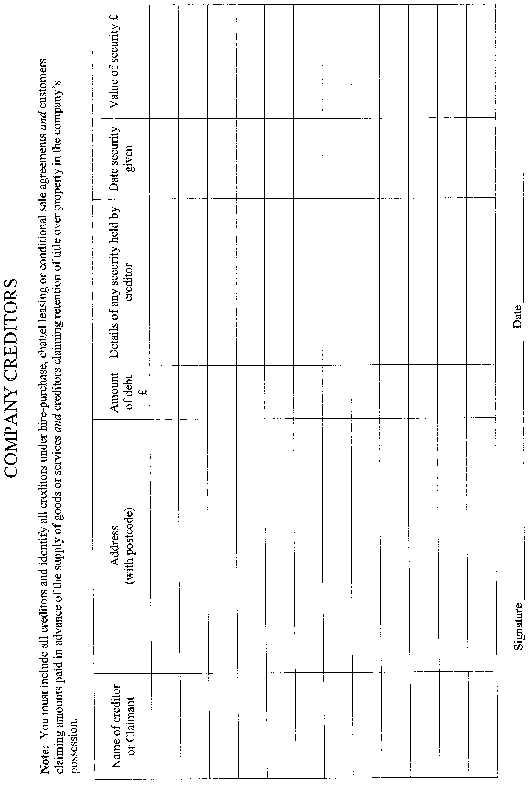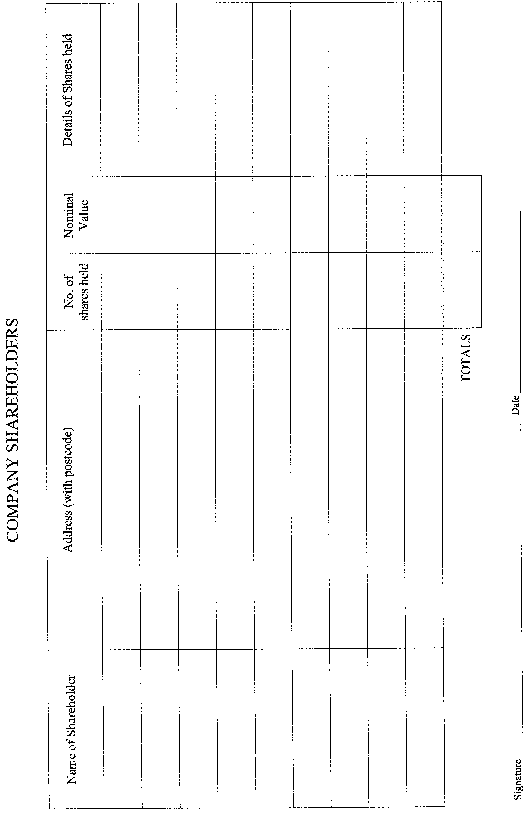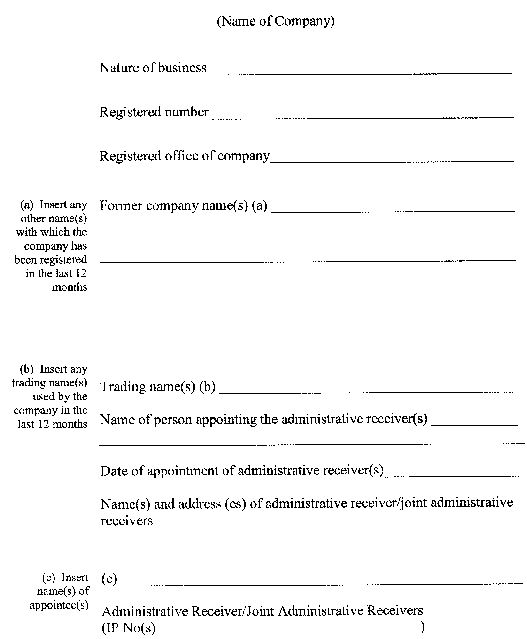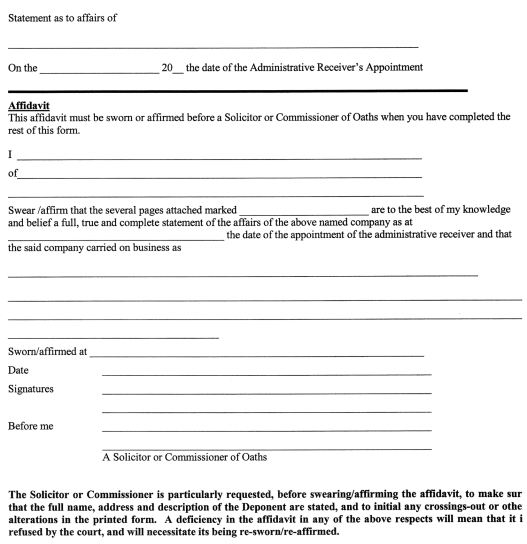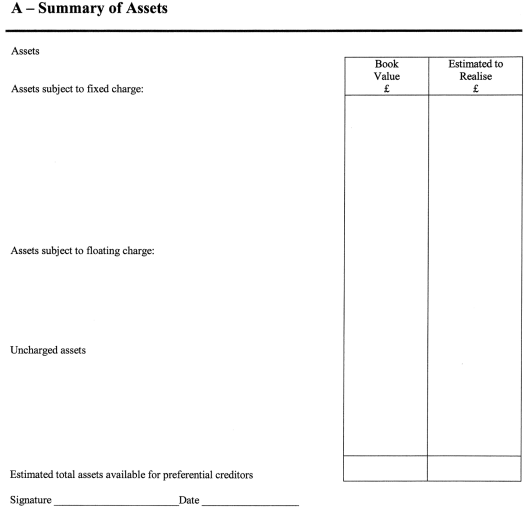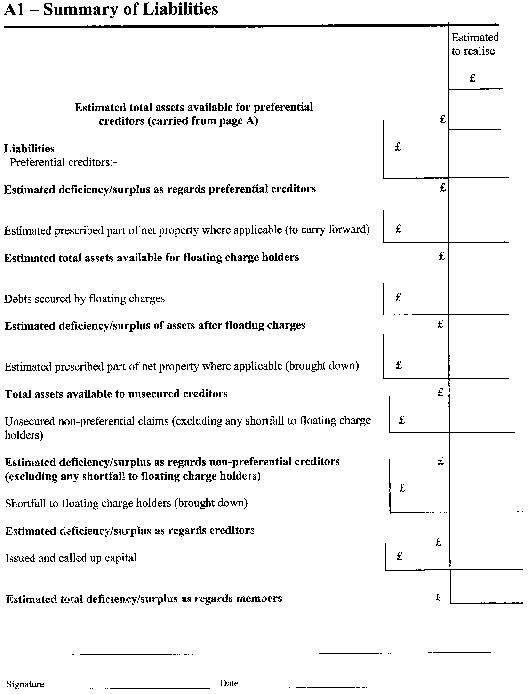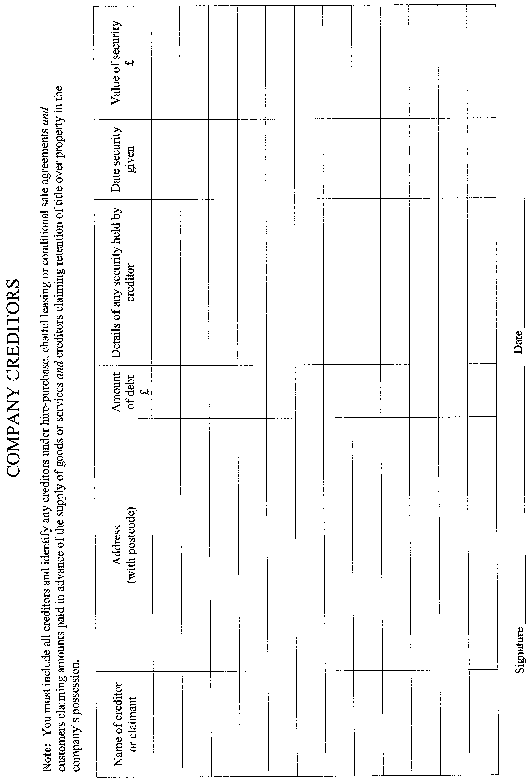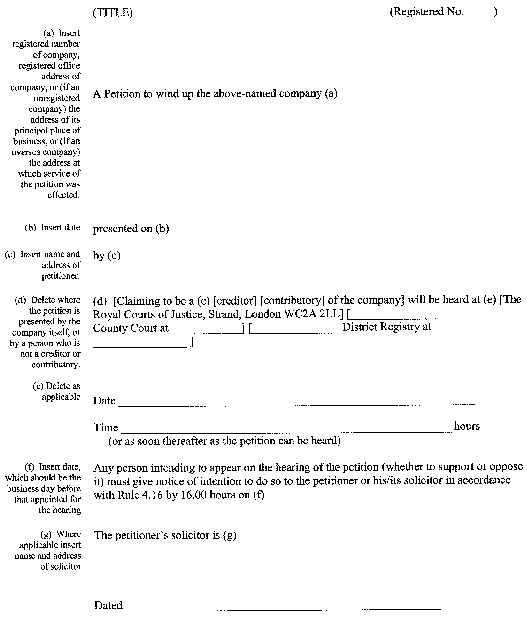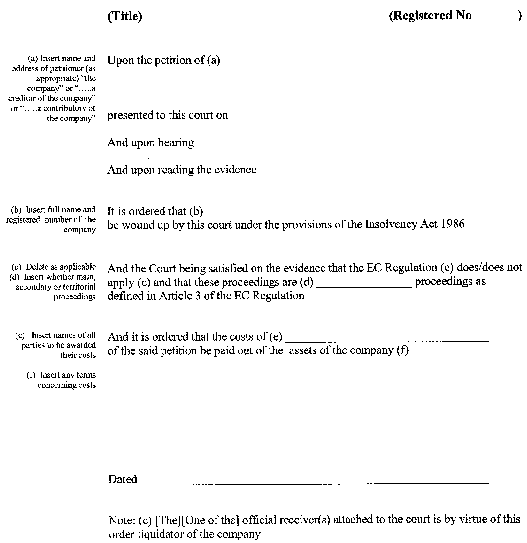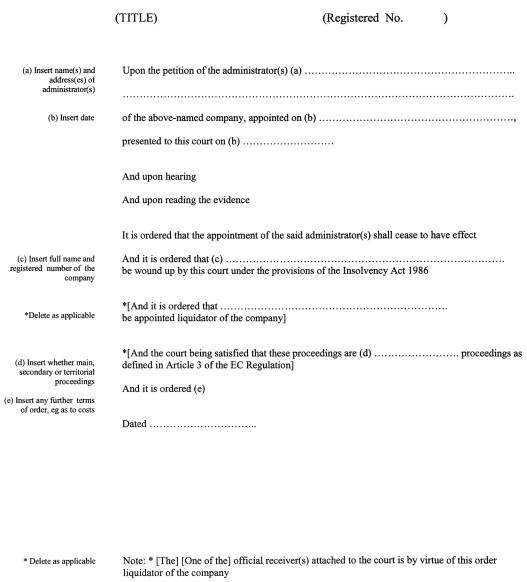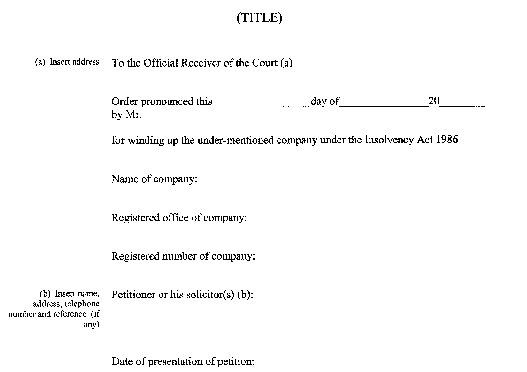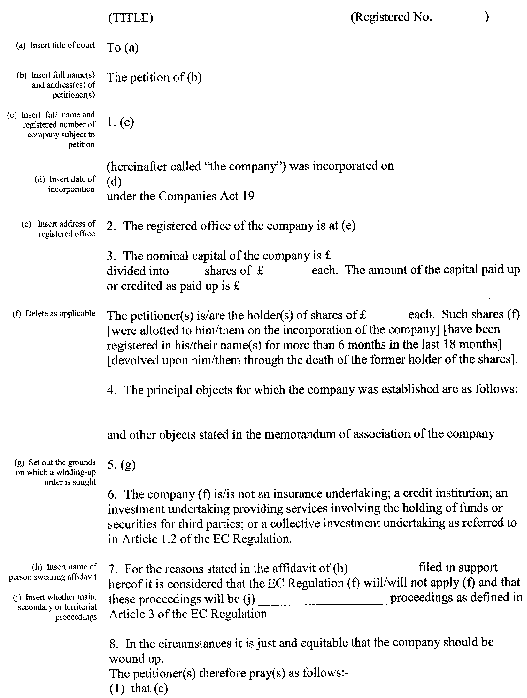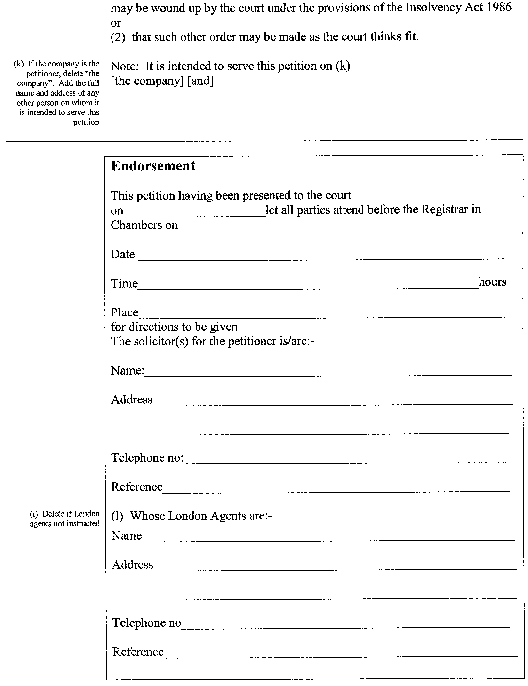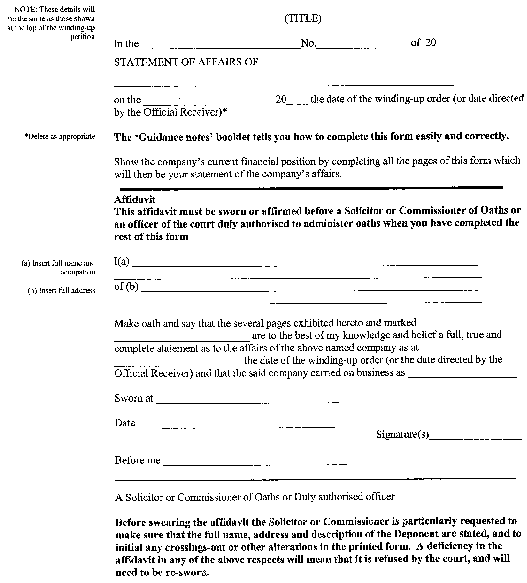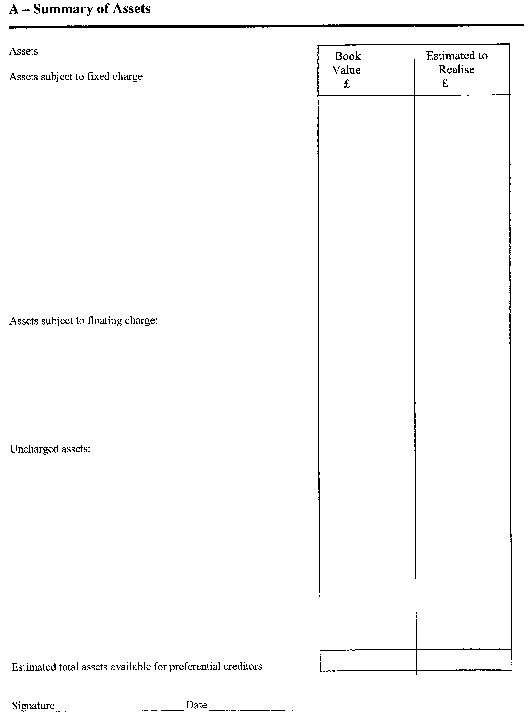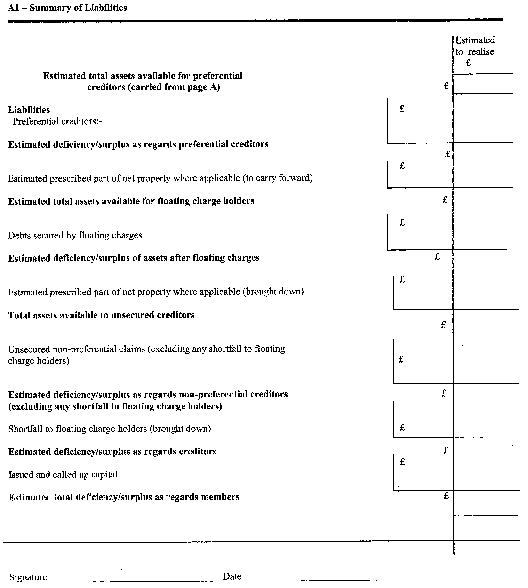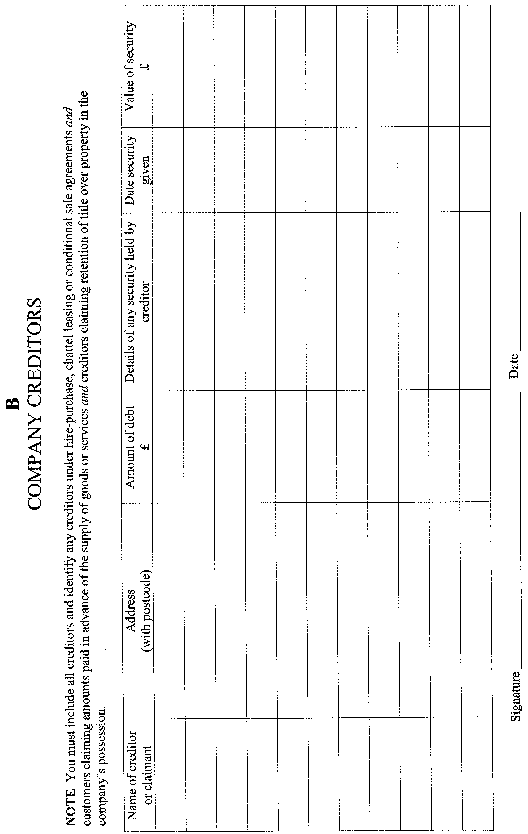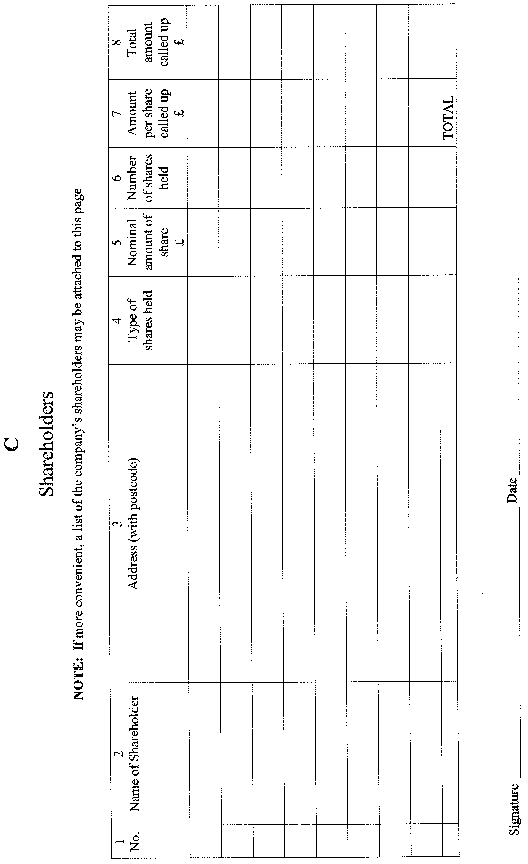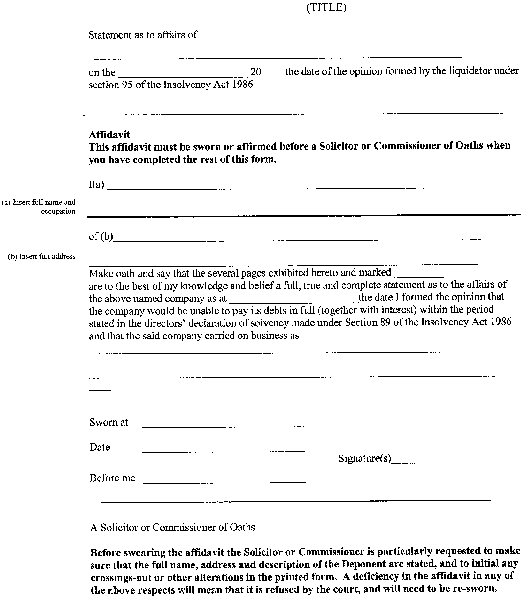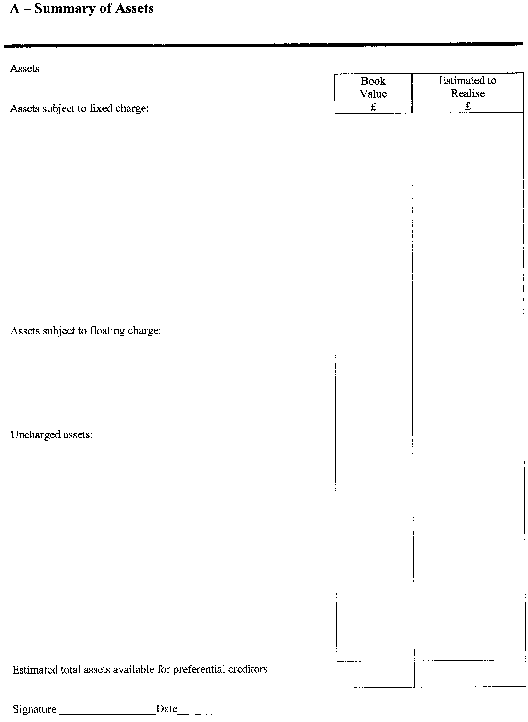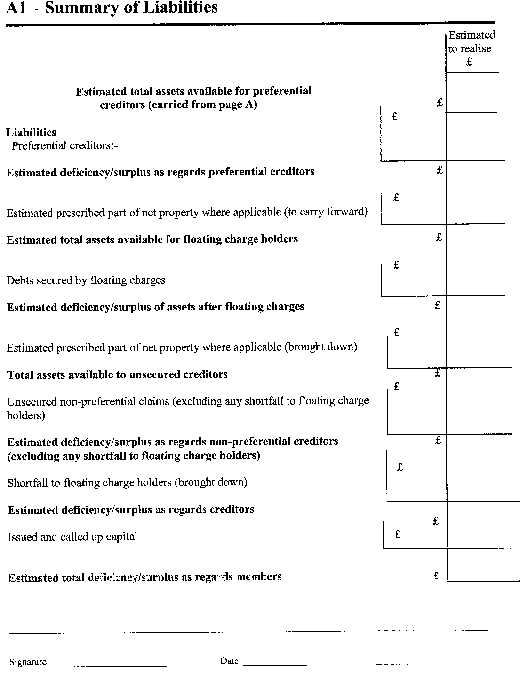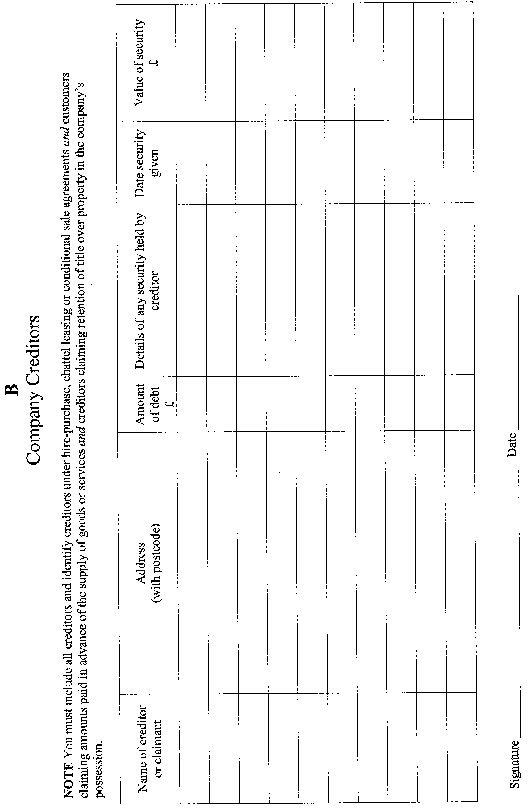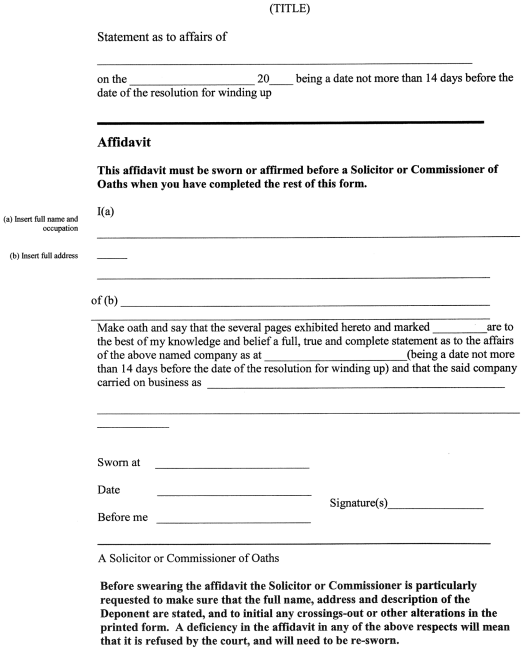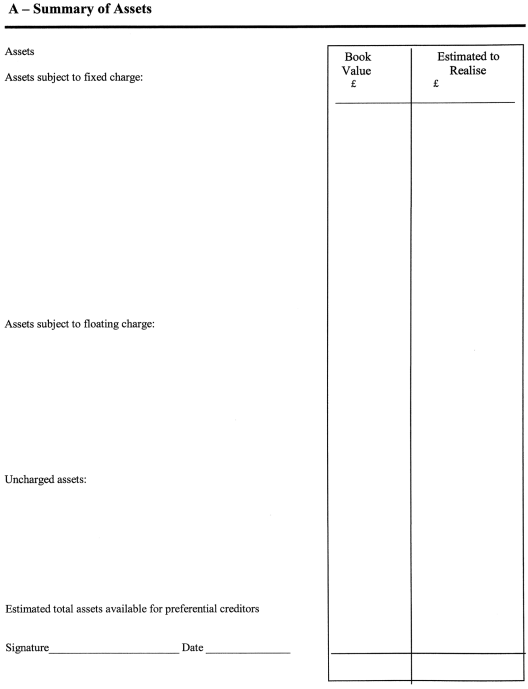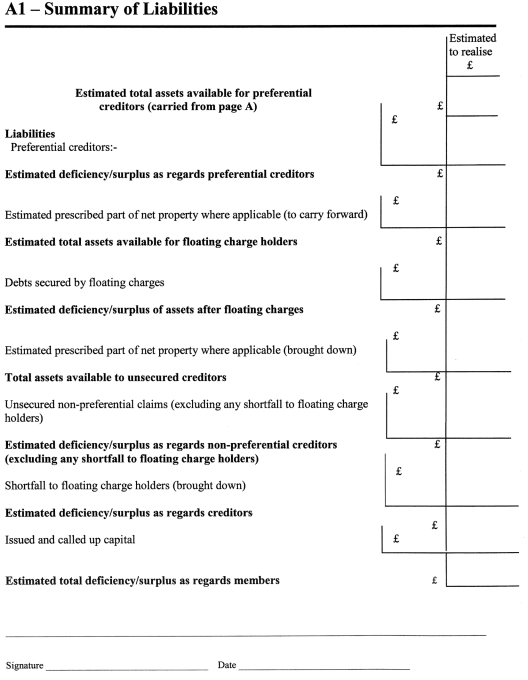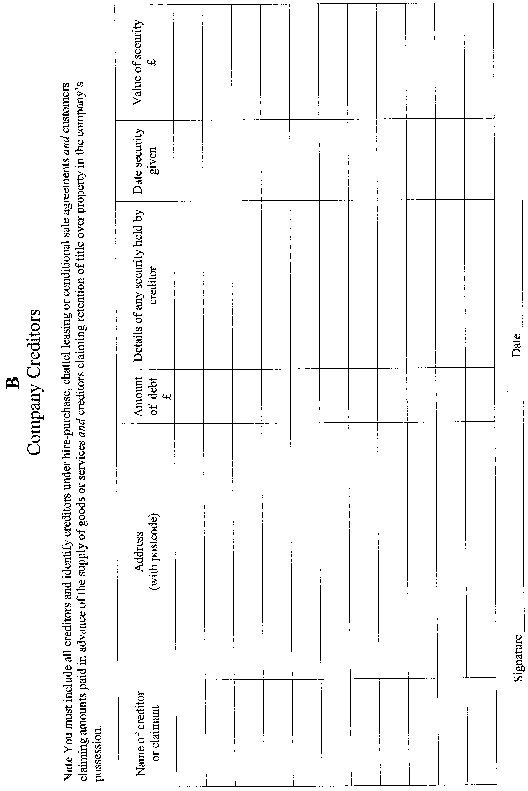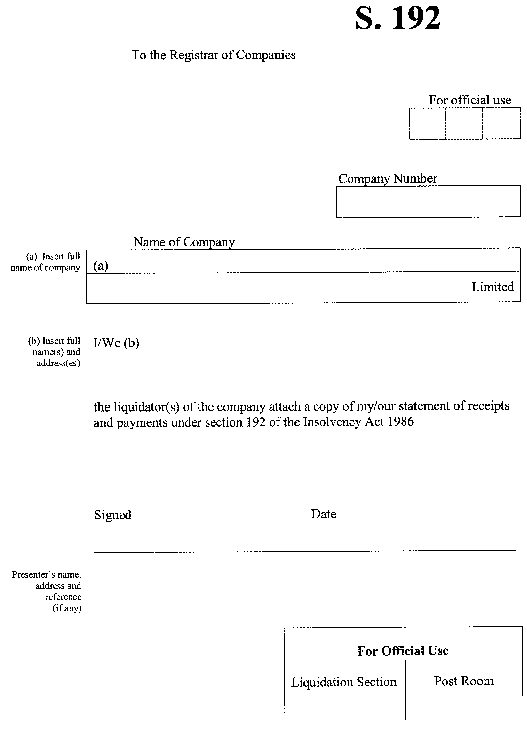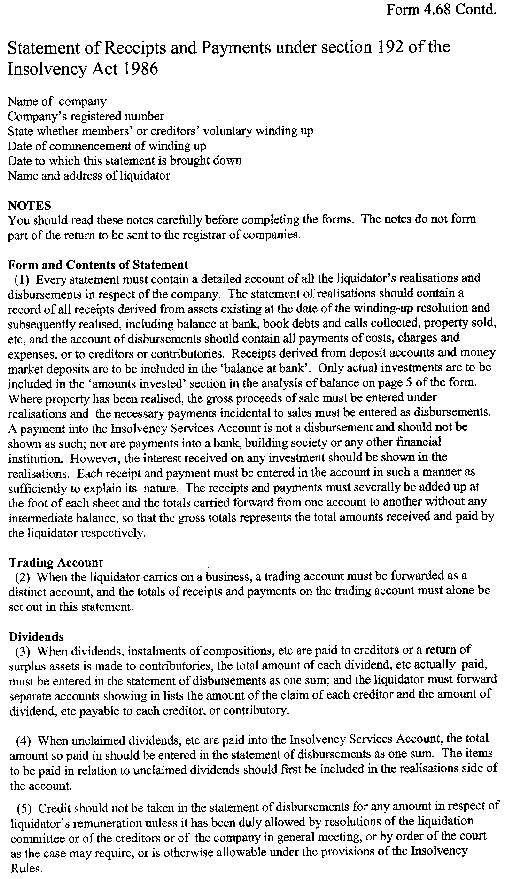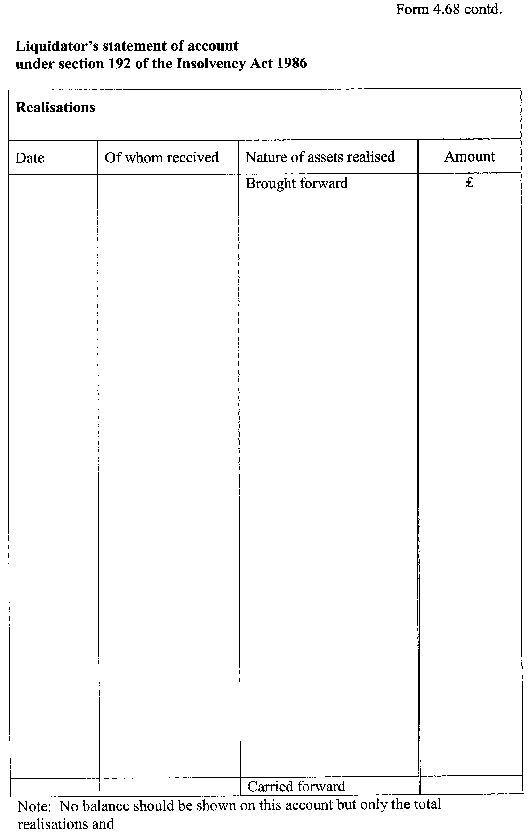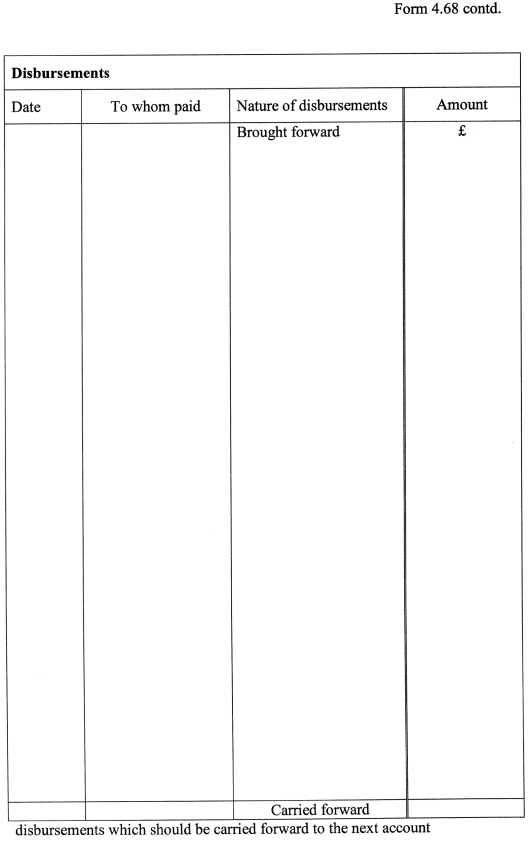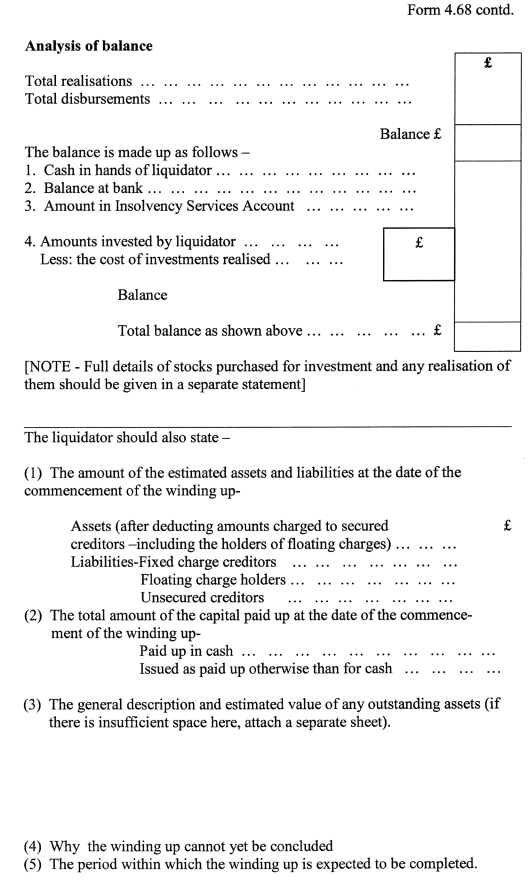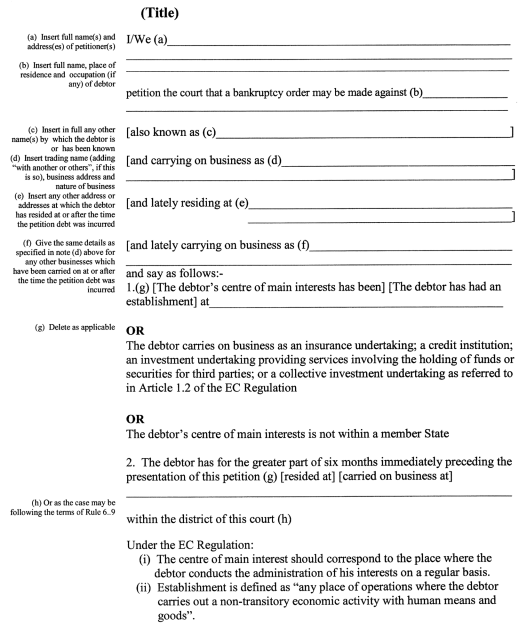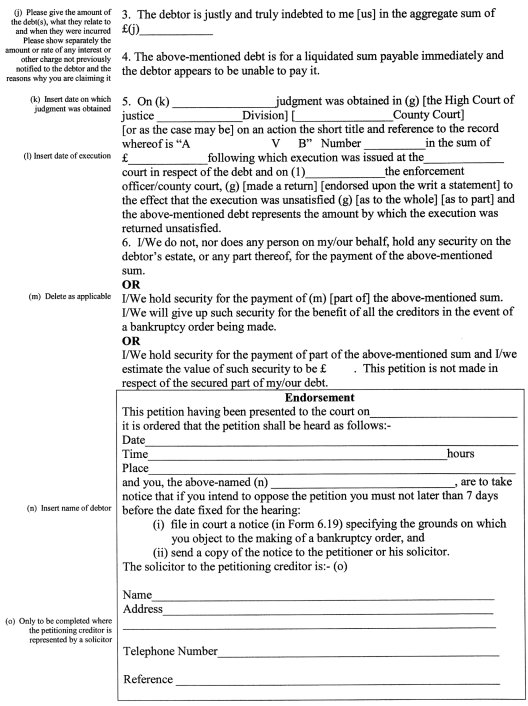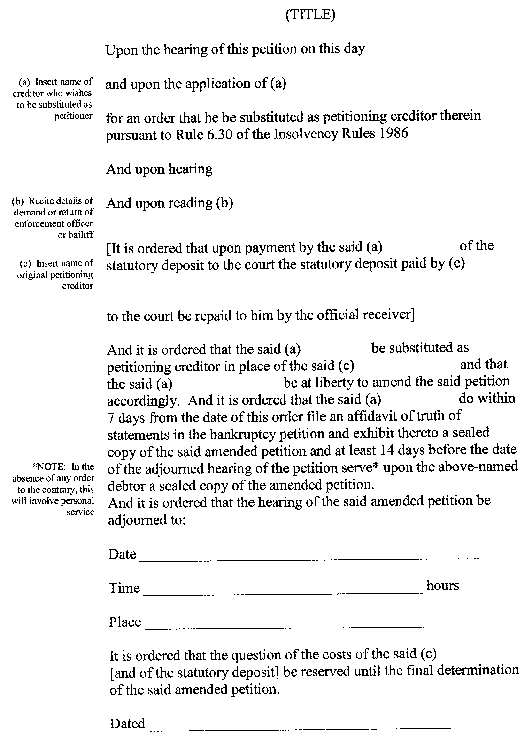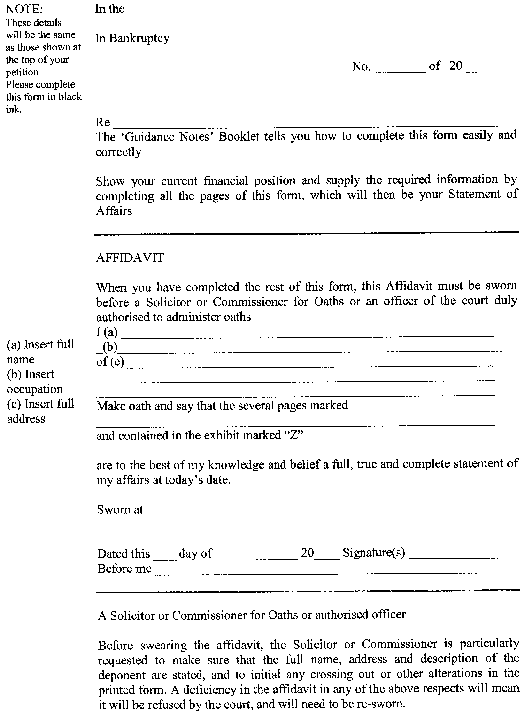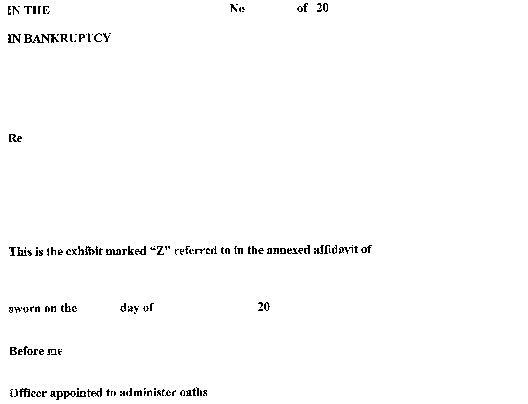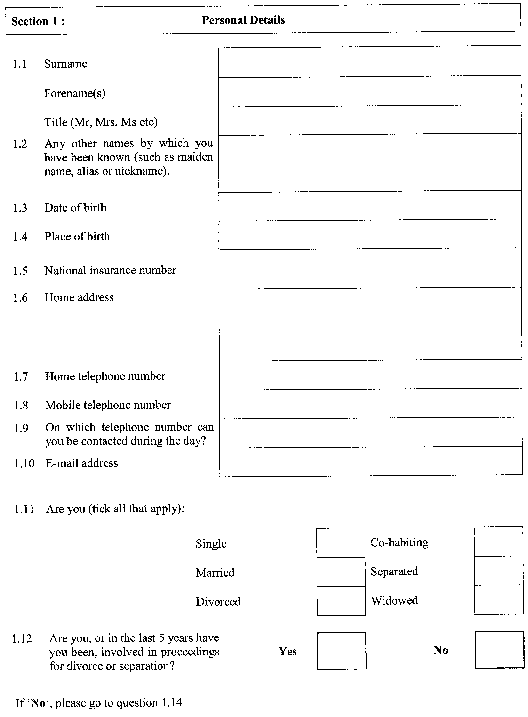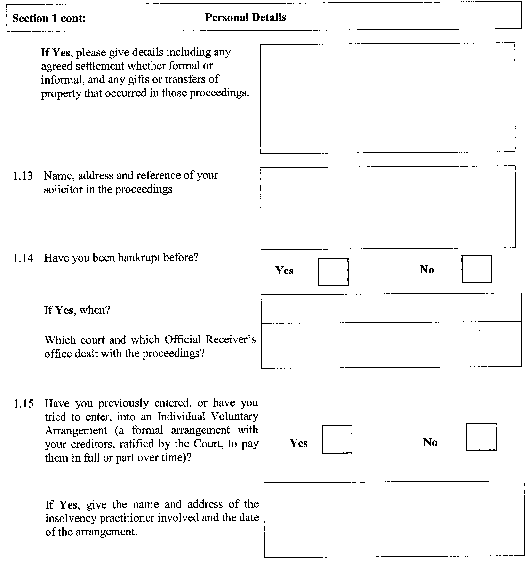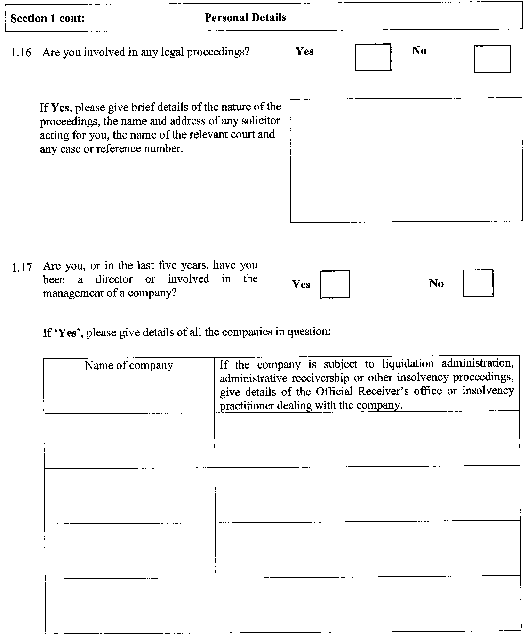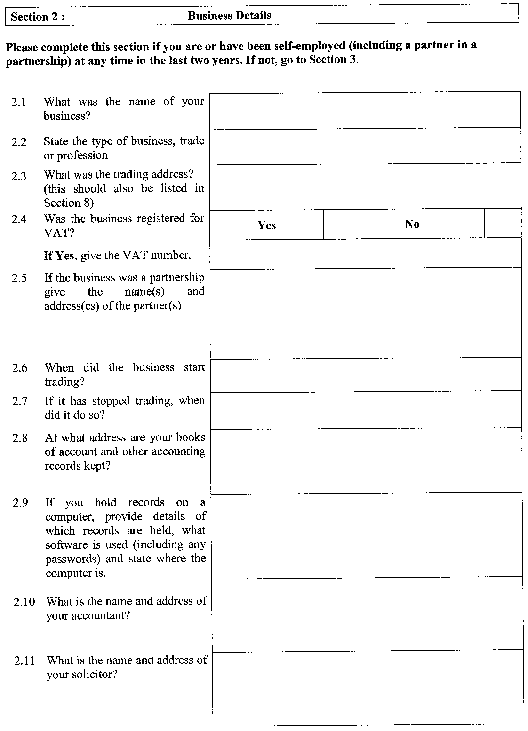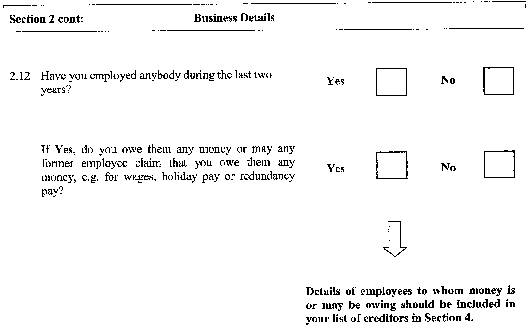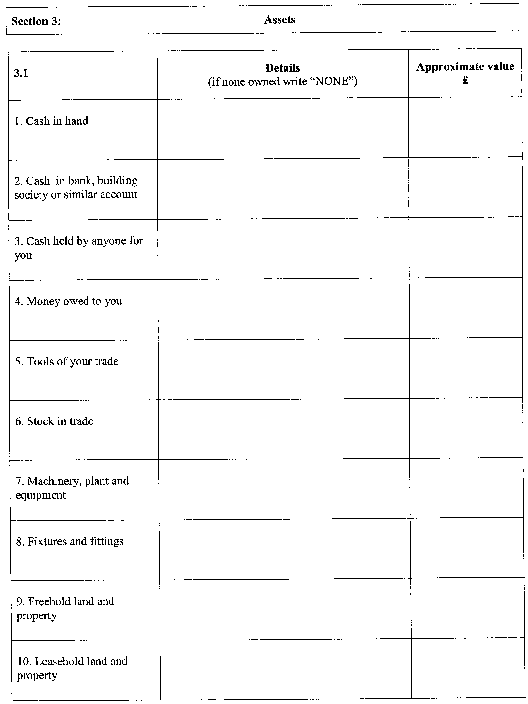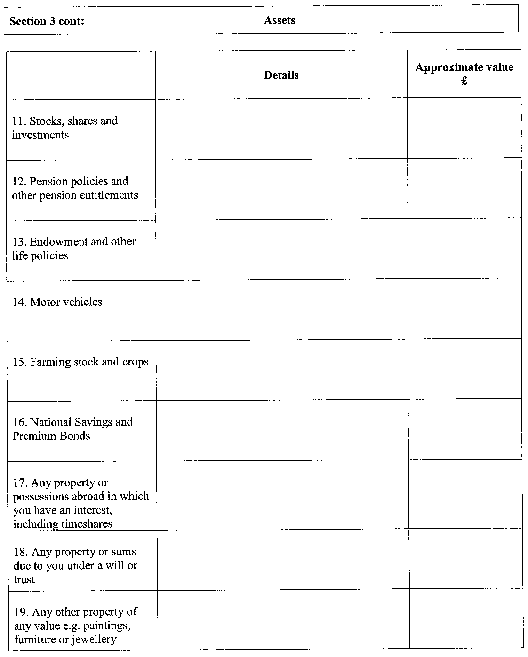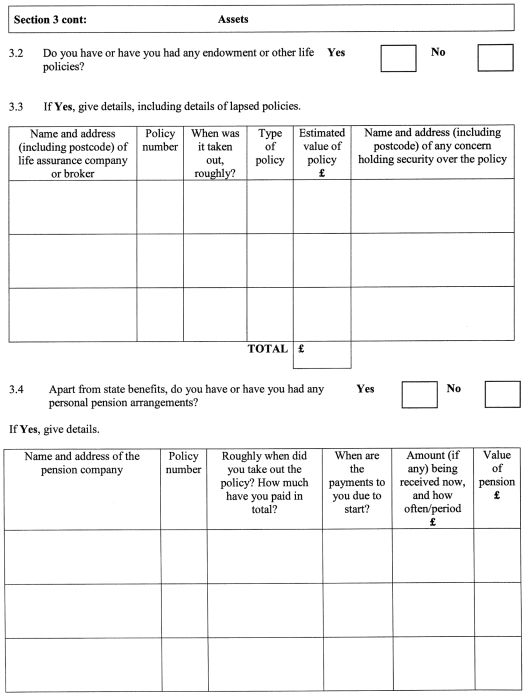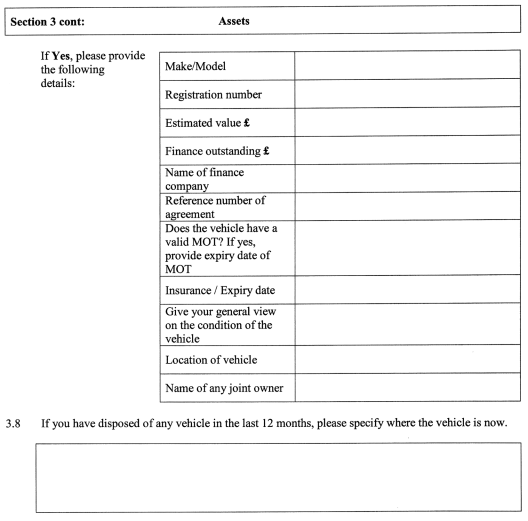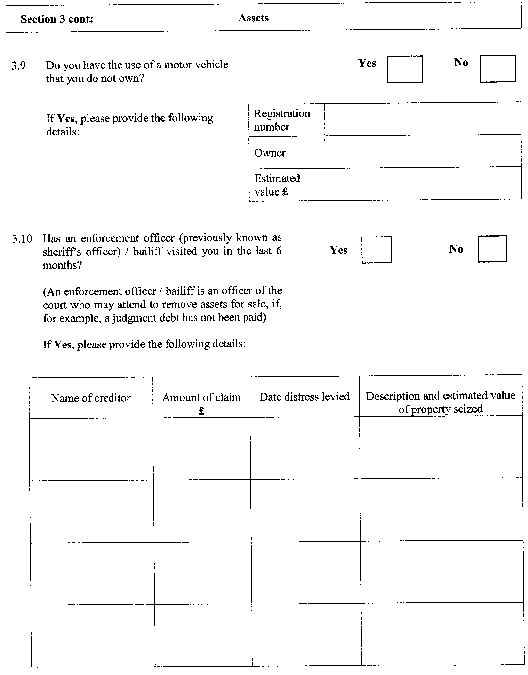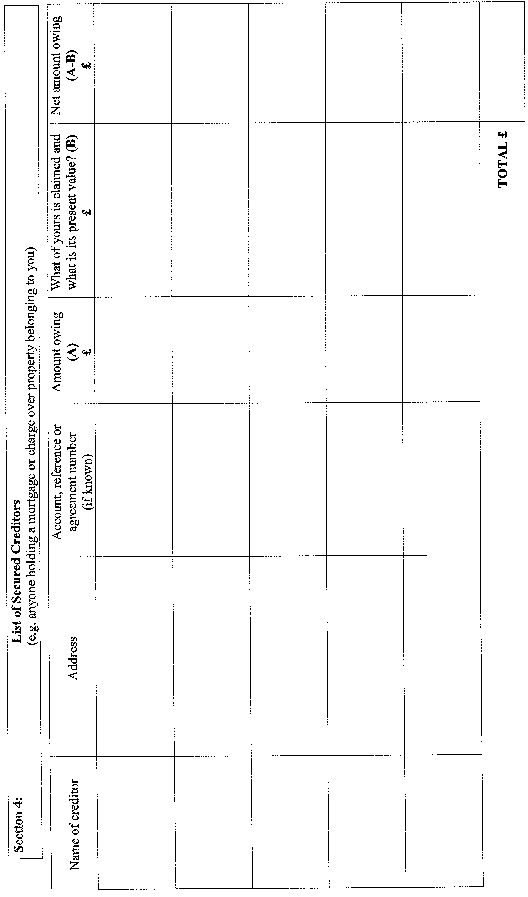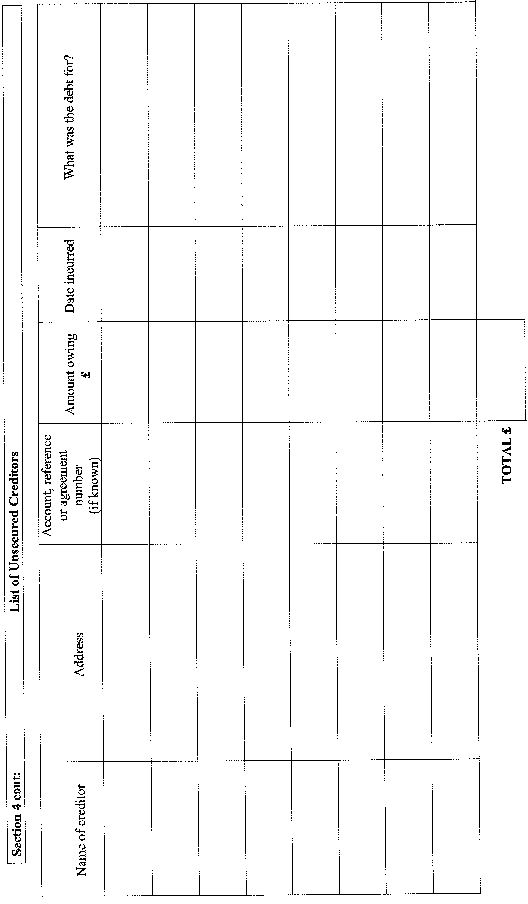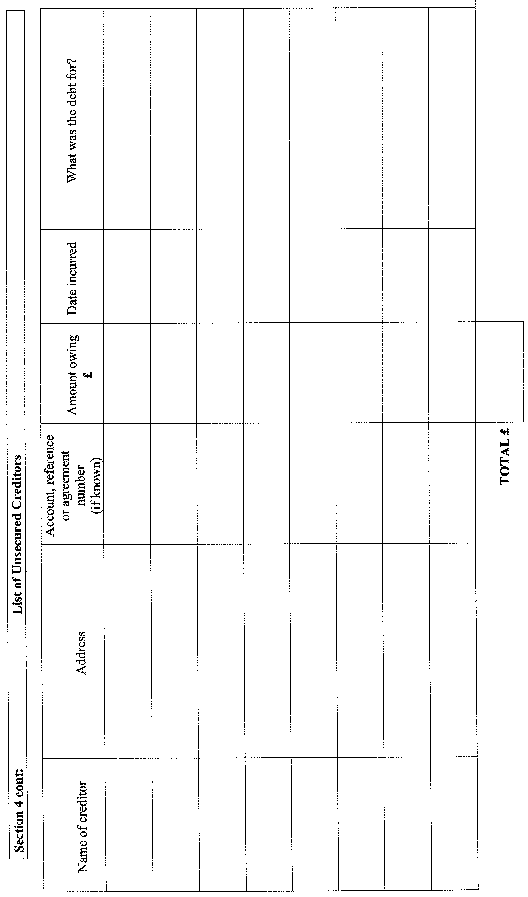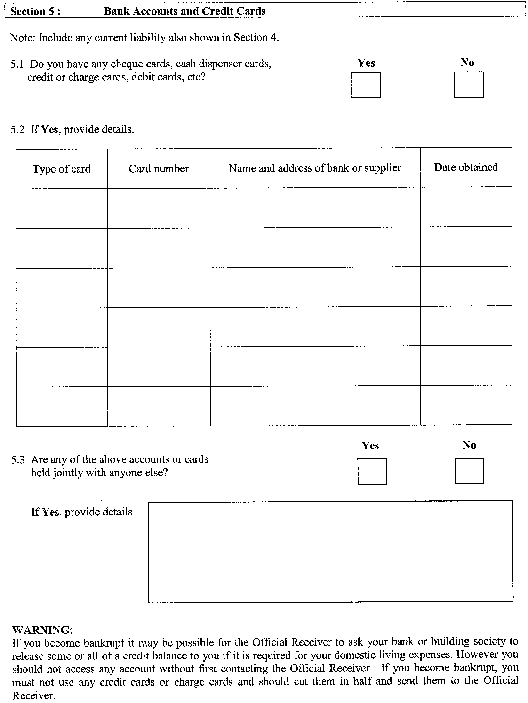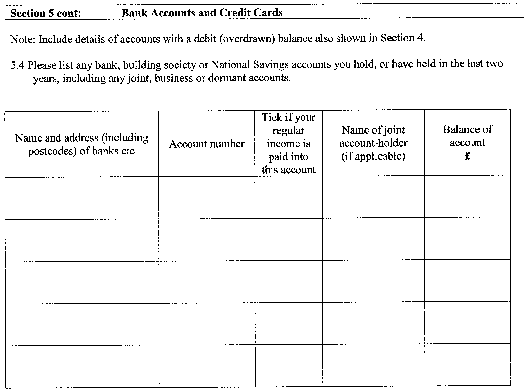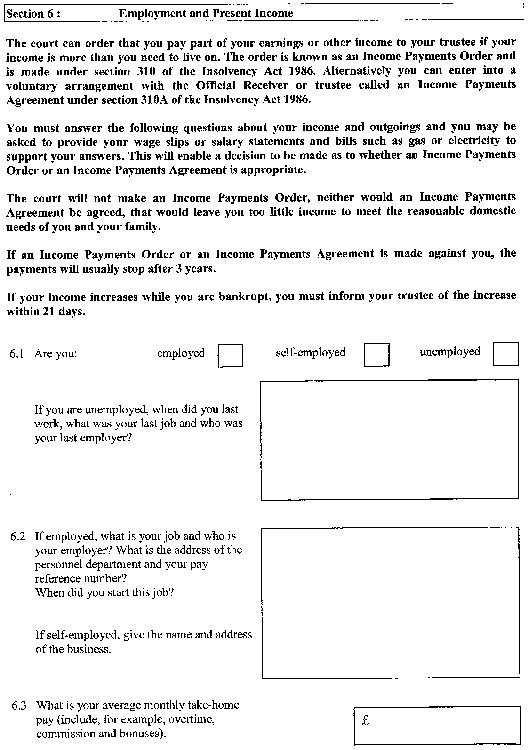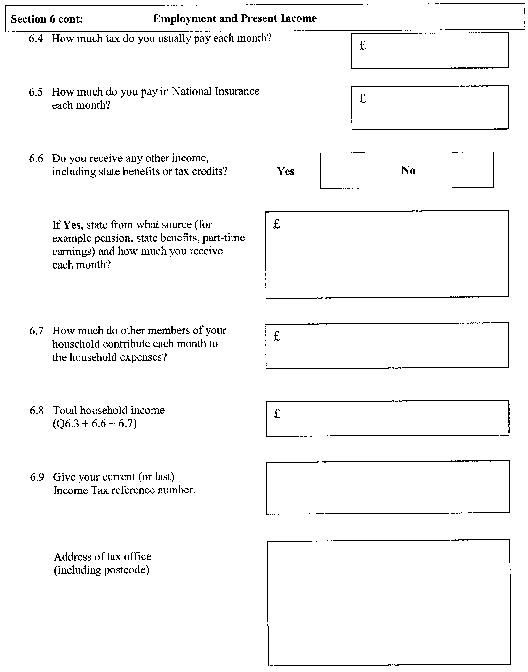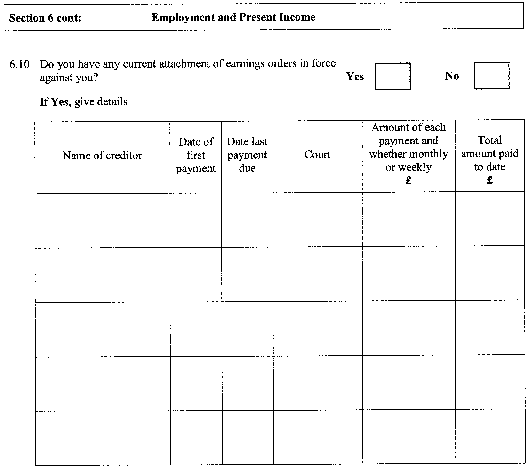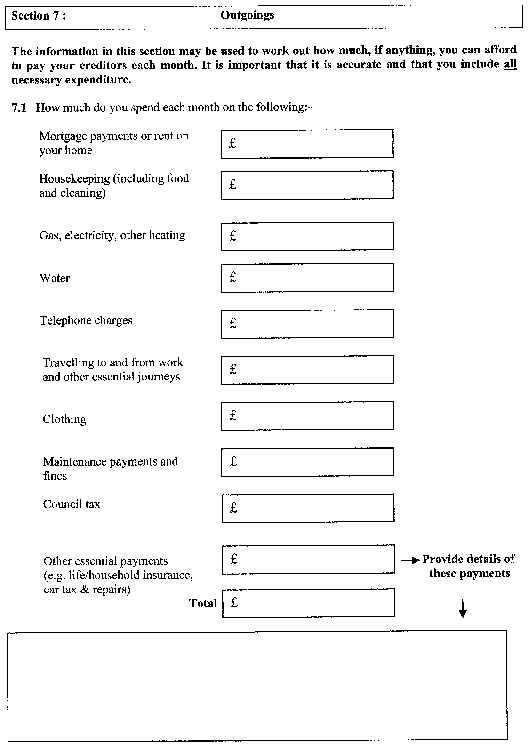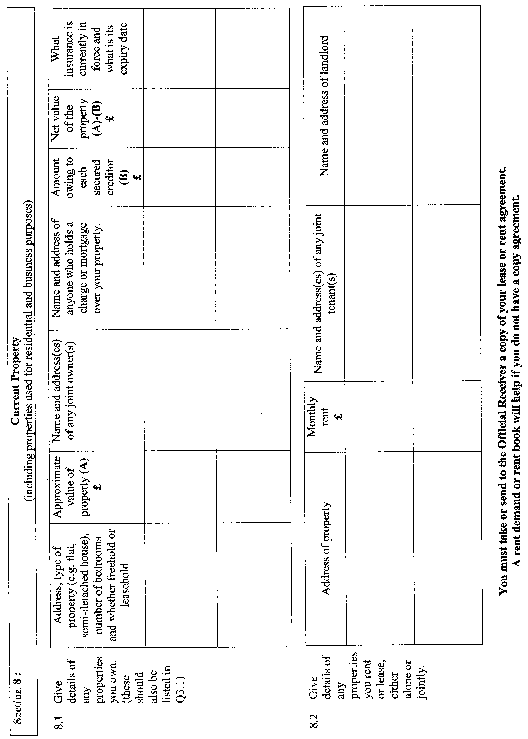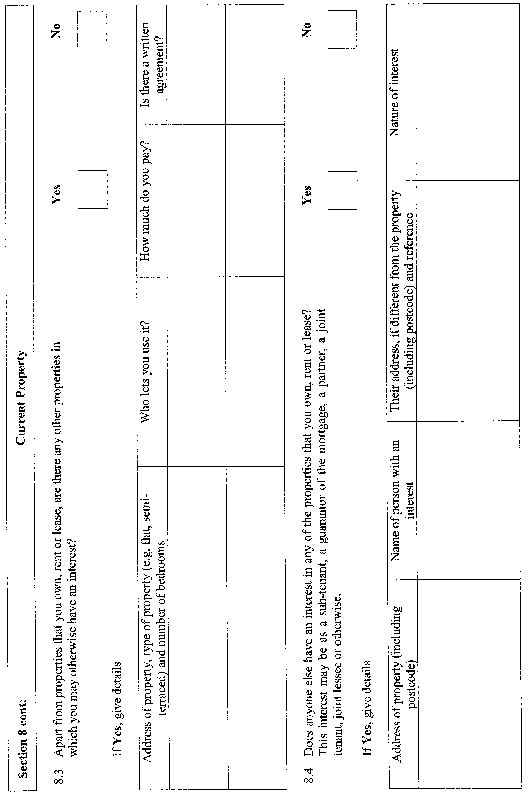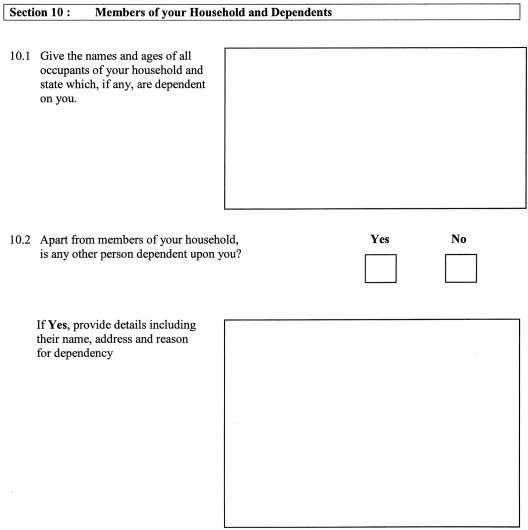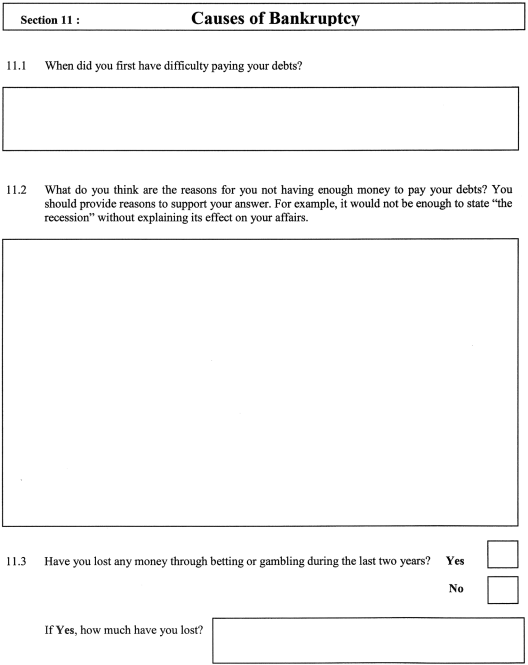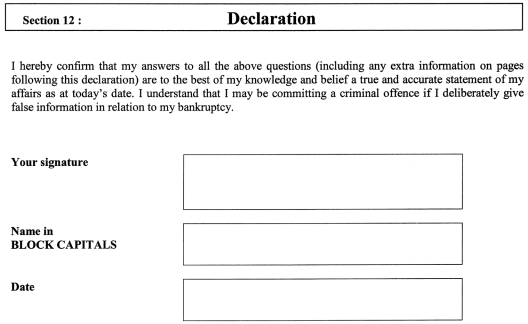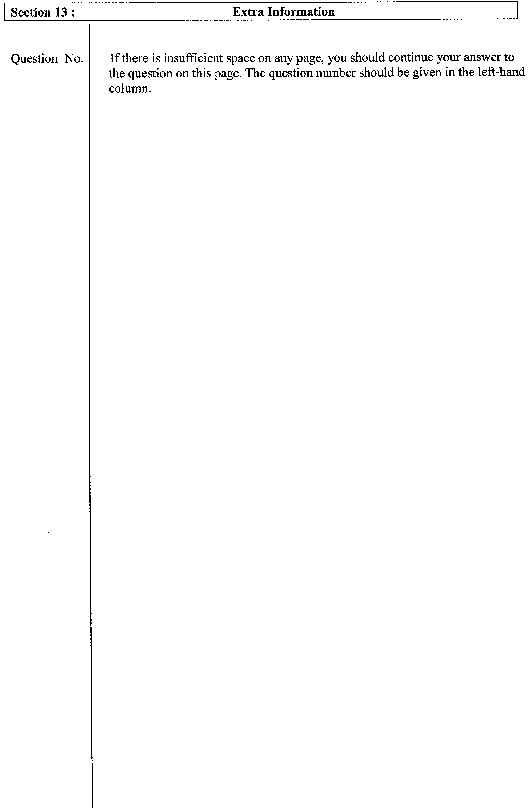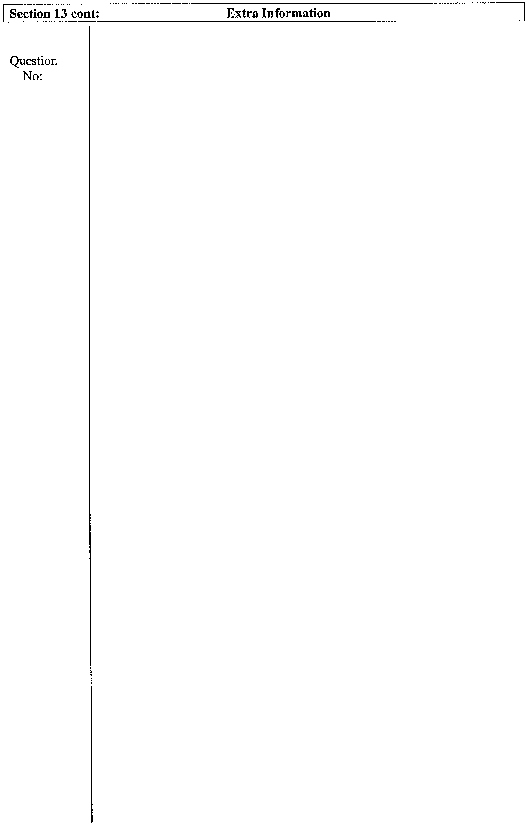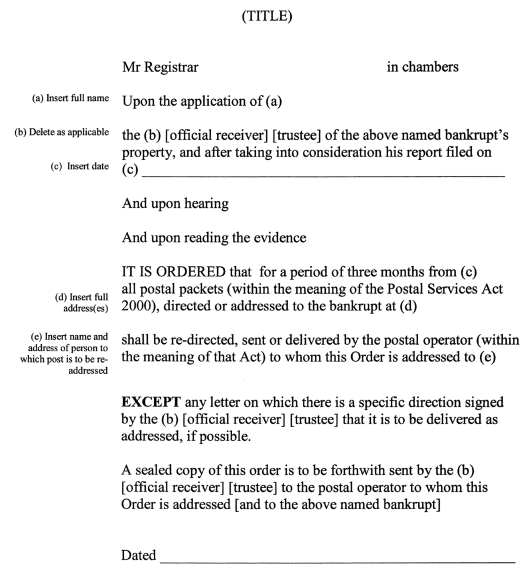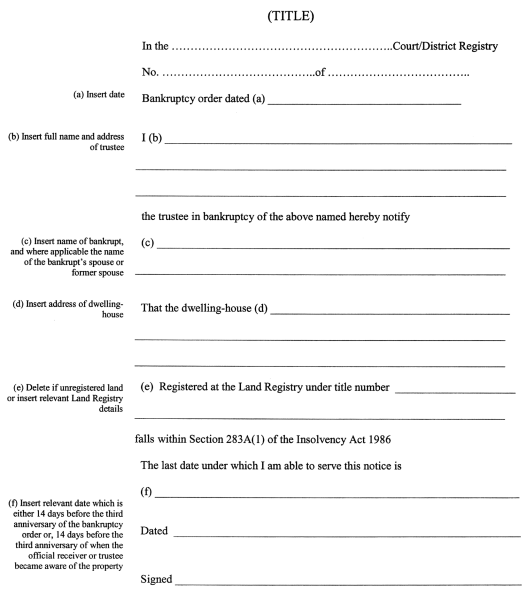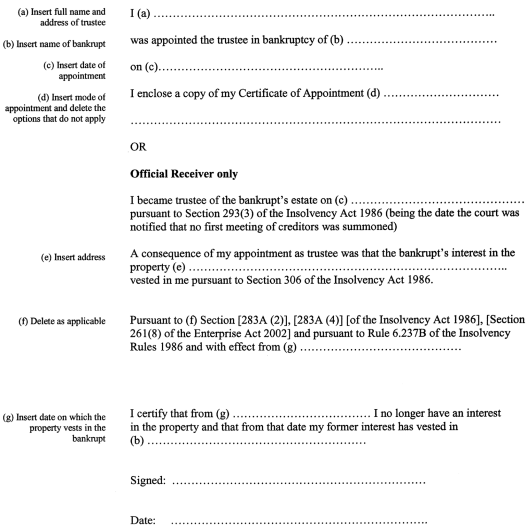Statutory Instruments
2005 No. 527
INSOLVENCY, ENGLAND AND WALES
COMPANIES
INDIVIDUALS
The Insolvency (Amendment) Rules 2005
Made
8th March 2005
Laid before Parliament
8th March 2005
Coming into force
1st April 2005
The Lord Chancellor, in the exercise of the powers conferred on him by sections 411 and 412 of the Insolvency Act 1986(1), with the concurrence of the Secretary of State, and after consulting the committee existing for that purpose under section 413 of that Act, hereby makes the following Rules:—
Citation and commencement
1.—(1) These Rules may be cited as the Insolvency (Amendment) Rules 2005.
(2) These Rules shall come into force on 1st April 2005 (“the commencement date”).
Interpretation
2.—(1) In these Rules references to the “principal Rules” are to the Insolvency Rules 1986(2) and a Rule referred to by number alone means the Rule so numbered in the principal Rules.
(2) These Rules shall be construed as one with the principal Rules.
Transitional provisions
3.—(1) The provisions of Rules 8 to 17, 23 to 27, 43 and 44 of these Rules shall not apply, and the provisions of the principal Rules shall continue to apply without the amendments made by those Rules, in any case where a company has entered administration or gone into liquidation, or a bankruptcy order has been made, before the commencement date.
(2) The provisions of Rules 29, 30, 32 and 39 to these Rules shall apply in any case where, on or after 1st April 2004, a winding-up order has been made or a resolution for the winding up of a company has been passed or a bankruptcy order has been made, before the commencement date.
Amendment to Rule 1.40
4. In paragraph (4)(a) of Rule 1.40 for “sheriff” substitute “enforcement officer”.
Amendment to Rule 2.7
5. In Rule 2.7—
(a)in the heading to the Rule for “sheriff” substitute “officers charged with execution of writs or other process”; and
(b)in paragraph (a) of Rule 2.7 for “sheriff” substitute “enforcement officer”.
Amendment to Rule 2.20
6. In paragraph (2)(a) of Rule 2.20 for “sheriff” substitute “enforcement officer”.
Amendment to Rule 2.27
7. In paragraph (2)(c) of Rule 2.27 for “sheriff” substitute “enforcement officer”.
Amendment to Rule 2.67
8. In Rule 2.67 insert—
“(4) For the purposes of paragraph 99(3), the former administrator’s remuneration and expenses shall comprise all those items set out in paragraph (1) of this Rule.”.
Substitution of Rule 2.85
9. For Rule 2.85 substitute—
“Mutual credits and set-off
2.85.—(1) This Rule applies where the administrator, being authorised to make the distribution in question, has, pursuant to Rule 2.95 given notice that he proposes to make it.
(2) In this Rule “mutual dealings” means mutual credits, mutual debts or other mutual dealings between the company and any creditor of the company proving or claiming to prove for a debt in the administration but does not include any of the following—
(a)any debt arising out of an obligation incurred after the company entered administration;
(b)any debt arising out of an obligation incurred at a time when the creditor had notice that—
(i)an application for an administration order was pending; or
(ii)any person had given notice of intention to appoint an administrator;
(c)any debt arising out of an obligation where—
(i)the administration was immediately preceded by a winding up; and
(ii)at the time the obligation was incurred the creditor had notice that a meeting of creditors had been summoned under section 98 or a petition for the winding up of the company was pending;
(d)any debt arising out of an obligation incurred during a winding up which immediately preceded the administration; or
(e)any debt which has been acquired by a creditor by assignment or otherwise, pursuant to an agreement between the creditor and any other party where that agreement was entered into—
(i)after the company entered administration;
(ii)at a time when the creditor had notice that an application for an administration order was pending;
(iii)at a time when the creditor had notice that any person had given notice of intention to appoint an administrator;
(iv)where the administration was immediately preceded by a winding up, at a time when the creditor had notice that a meeting of creditors had been summoned under section 98 or that a winding up petition was pending; or
(v)during a winding up which immediately preceded the administration.
(3) An account shall be taken as at the date of the notice referred to in paragraph (1) of what is due from each party to the other in respect of the mutual dealings and the sums due from one party shall be set off against the sums due from the other.
(4) A sum shall be regarded as being due to or from the company for the purposes of paragraph (3) whether—
(a)it is payable at present or in the future;
(b)the obligation by virtue of which it is payable is certain or contingent; or
(c)its amount is fixed or liquidated, or is capable of being ascertained by fixed rules or as a matter of opinion.
(5) Rule 2.81 shall apply for the purposes of this Rule to any obligation to or from the company which, by reason of its being subject to any contingency or for any other reason, does not bear a certain value;
(6) Rules 2.86 to 2.88 shall apply for the purposes of this Rule in relation to any sums due to the company which—
(a)are payable in a currency other than sterling;
(b)are of a periodical nature; or
(c)bear interest.
(7) Rule 2.105 shall apply for the purposes of this Rule to any sum due to or from the company which is payable in the future.
(8) Only the balance (if any) of the account owed to the creditor is provable in the administration. Alternatively the balance (if any) owed to the company shall be paid to the administrator as part of the assets except where all or part of the balance results from a contingent or prospective debt owed by the creditor and in such a case the balance (or that part of it which results from the contingent or prospective debt) shall be paid if and when that debt becomes due and payable.
(9) In this Rule “obligation” means an obligation however arising, whether by virtue of an agreement, rule of law or otherwise.”.
Amendment to Rule 2.86
10. At the end of Rule 2.86(1) insert “or, if the administration was immediately preceded by a winding up, on the date that the company went into liquidation”.
Amendment to Rule 2.87
11. At the end of Rule 2.87(1) insert “or, if the administration was immediately preceded by a winding up, up to the date that the company went into liquidation”.
Amendment to Rule 2.88
12. In Rule 2.88—
(a)at the end of paragraph (1) insert “or, if the administration was immediately preceded by a winding up, any period after the date that the company went into liquidation”; and
(b)in paragraph (7) omit the words “Subject to Rule 2.105(3),”.
Amendment to Rule 2.89
13. In Rule 2.89 after “entered administration,” insert “or, if the administration was immediately preceded by a winding up, up to the date that the company went into liquidation”.
Amendment to Rule 2.105
14.—(1) For paragraph (2) of Rule 2.105 substitute—
“(2) For the purpose of dividend (and no other purpose) the amount of the creditor’s admitted proof (or, if a distribution has previously been made to him, the amount remaining outstanding in respect of his admitted proof) shall be reduced by applying the following formula—
where—
“X” is the value of the admitted proof; and
“n” is the period beginning with the relevant date and ending with the date on which the payment of the creditor’s debt would otherwise be due expressed in years and months in a decimalised form.
(3) In paragraph (2) “relevant date” means—
(a)in the case of an administration which was not immediately preceded by a winding up, the date that the company entered administration;
(b)in the case of an administration which was immediately preceded by a winding up, the date that the company went into liquidation.”.
(2) Omit paragraph (3).
Amendment to Rule 2.106
15.—(1) After paragraph (5) of Rule 2.106 insert—
“(5A) In a case where the administrator has made a statement under paragraph 52(1)(b), if there is no creditors' committee, or the committee does not make the requisite determination, the administrator’s remuneration may be fixed (in accordance with paragraph (2)) by the approval of—
(a)each secured creditor of the company: or
(b)if the administrator has made or intends to make a distribution to preferential creditors—
(i)each secured creditor of the company; and
(ii)preferential creditors whose debts amount to more than 50% of the preferential debts of the company, disregarding debts of any creditor who does not respond to an invitation to give or withhold approval;
and paragraph (4) applies to them as it does to the creditors' committee.”.
(2) Omit paragraph (9).
Amendment to Rule 2.107
16. After Rule 2.107 insert, and Rule 2.107 becomes Rule 2.107(1)—
“(2) In a case where the administrator has made a statement under paragraph 52(1)(b), if the administrator’s remuneration has been fixed by the creditors' committee, and he considers the rate or amount to be insufficient, he may request that it be increased by the approval of—
(a)each secured creditor of the company: or
(b)if the administrator has made or intends to make a distribution to preferential creditors—
(i)each secured creditor of the company; and
(ii)preferential creditors whose debts amount to more than 50% of the preferential debts of the company, disregarding debts of any creditor who does not respond to an invitation to give or withhold approval.”.
Amendment to Rule 2.108
17. After paragraph (1) of Rule 2.108 insert—
“(1A) In a case where the administrator has made a statement under paragraph 52(1)(b), if the administrator considers that the remuneration fixed by the approval of the creditors in accordance with Rule 2.107(2) is insufficient, he may apply to the court for an order increasing its amount or rate.”.
Amendment to Rule 4.7
18. For Rule 4.7(7)(c) substitute—
“(c)where applicable, contain an application under paragraph 79 of Schedule B1, requesting that the appointment of the administrator shall cease to have effect.”.
Amendment to Rule 4.11
19. In Rule 4.11(4)(a) after “the name” insert “and registered number”.
Amendment to Rule 4.12
20. After paragraph (7) of Rule 4.12 insert—
“(8) The affidavit shall state whether, in the opinion of the person making the application, (i) the EC Regulation will apply and (ii) if so, whether the proceedings will be main proceedings or territorial proceedings.”.
Amendment to Rule 4.26
21. In Rule 4.26—
(a)in paragraph (2)—
(i)in sub-paragraph (a) for “two” substitute “three”; and,
(ii)in sub-paragraph (b)(i) for “two” substitute “three”; and,
(b)for paragraph (3) substitute—
“(3) Of the three copies of the order sent to the official receiver under paragraph (2)(a), or to another person under paragraph (2)(b)(i)—
(i)one shall in each case be sent by the recipient to the company, or if a liquidator has been appointed for the company’s voluntary winding-up, to him; and
(ii)one shall be sent with Form 4.15A to the registrar of companies.”.
Amendment to Rule 4.51-CVL
22. In Rule 4.51-CVL(2) after “summoning the meeting shall” insert “state the name of the company and the registered number of the company, and”.
Substitution of Rule 4.90
23. For Rule 4.90 substitute—
“Mutual credits and set-off
4.90.—(1) This Rule applies where, before the company goes into liquidation there have been mutual credits, mutual debts or other mutual dealings between the company and any creditor of the company proving or claiming to prove for a debt in the liquidation.
(2) The reference in paragraph (1) to mutual credits, mutual debts or other mutual dealings does not include—
(a)any debt arising out of an obligation incurred at a time when the creditor had notice that—
(i)a meeting of creditors had been summoned under section 98; or
(ii)a petition for the winding up of the company was pending;
(b)any debt arising out of an obligation where—
(i)the liquidation was immediately preceded by an administration; and
(ii)at the time the obligation was incurred the creditor had notice that an application for an administration order was pending or a person had given notice of intention to appoint an administrator;
(c)any debt arising out of an obligation incurred during an administration which immediately preceded the liquidation; or
(d)any debt which has been acquired by a creditor by assignment or otherwise, pursuant to an agreement between the creditor and any other party where that agreement was entered into—
(i)after the company went into liquidation;
(ii)at a time when the creditor had notice that a meeting of creditors had been summoned under section 98;
(iii)at a time when the creditor had notice that a winding up petition was pending;
(iv)where the liquidation was immediately preceded by an administration, at a time when the creditor had notice that an application for an administration order was pending or a person had given notice of intention to appoint an administrator; or
(v)during an administration which immediately preceded the liquidation.
(3) An account shall be taken of what is due from each party to the other in respect of the mutual dealings, and the sums due from one party shall be set off against the sums due from the other.
(4) A sum shall be regarded as being due to or from the company for the purposes of paragraph (3) whether—
(a)it is payable at present or in the future;
(b)the obligation by virtue of which it is payable is certain or contingent; or
(c)its amount is fixed or liquidated, or is capable of being ascertained by fixed rules or as a matter of opinion.
(5) Rule 4.86 shall also apply for the purposes of this Rule to any obligation to or from the company which, by reason of its being subject to any contingency or for any other reason, does not bear a certain value.
(6) Rules 4.91 to 4.93 shall apply for the purposes of this Rule in relation to any sums due to the company which—
(a)are payable in a currency other than sterling;
(b)are of a periodical nature; or
(c)bear interest.
(7) Rule 11.13 shall apply for the purposes of this Rule to any sum due to or from the company which is payable in the future.
(8) Only the balance (if any) of the account owed to the creditor is provable in the liquidation. Alternatively the balance (if any) owed to the company shall be paid to the liquidator as part of the assets except where all or part of the balance results from a contingent or prospective debt owed by the creditor and in such a case the balance (or that part of it which results from the contingent or prospective debt) shall be paid if and when that debt becomes due and payable.
(9) In this Rule “obligation” means an obligation however arising, whether by virtue of an agreement, rule of law or otherwise.”.
Amendment to Rule 4.91
24. At the end of Rule 4.91(1) insert “or, if the liquidation was immediately preceded by an administration, on the date that the company entered administration”.
Amendment to Rule 4.92
25. At the end of Rule 4.92(1) insert “or, if the liquidation was immediately preceded by an administration, up to the date that the company entered administration”.
Amendment to Rule 4.93
26. At the end of Rule 4.93(1) insert “or, if the liquidation was immediately preceded by an administration, any period after the date that the company entered administration”.
Amendment to Rule 4.94
27. In Rule 4.94 after “went into liquidation,” insert “or, if the liquidation was immediately preceded by an administration, on the date that the company entered administration”.
Amendment to Rule 4.125
28. In Rule 4.125(4) for the words “official receiver” substitute “Secretary of State”.
Amendment to Rule 4.127B
29. At the end of sub-paragraph (3)(b) of Rule 4.127B there shall be inserted “and payments made in respect of preferential debts”.
Amendment to Rule 4.148A
30. In paragraph (5) of Rule 4.148A after “Rule 4.128” insert “and Rule 4.127B”.
Amendment to Rule 4.184
31. In Rule 4.184(1) after “liquidation committee” insert “(or if there is no such committee, a meeting of the company’s creditors)” and after “under” insert “section 165(2) or”.
Amendment to Rule 4.218
32. In sub-paragraph (o) of paragraph (1) of Rule 4.218 for the words “to the official receiver under general regulations” substitute “under Schedule 6”.
Amendment to Rule 4.223-CVL
33. Omit paragraph (4) of Rule 4.223-CVL.
Amendment to Rule 5.60
34. In paragraph (5) of Rule 5.60 for the words “paragraphs (3) and (4) are” substitute “paragraph (3) is”.
Amendment to Rule 6.34
35. In paragraph (3) of Rule 6.34 for “Rule 6.223(B)(1)” substitute “Rule 6A.4(2)”.
Amendment to Rule 6.42
36. In Rule 6.42—
(a)in paragraph (1) for “two copies” substitute “one copy”; and
(b)for paragraph (4) substitute—
“(4) The copy of the statement of affairs shall be sent by the court to the official receiver.”.
Amendment to Rule 6.46
37. In paragraph (3) of Rule 6.46 for “Rule 6.223(B)(1)” substitute “Rule 6A.4(2)”.
Amendment to Rule 6.137
38. In Rule 6.137(4) for the words “official receiver” substitute “Secretary of State”.
Amendment to Rule 6.224
39. In sub-paragraph (o) of paragraph (1) of Rule 6.224 for the words “to the official receiver under general regulations” substitute “under Schedule 6”.
Insertion of new Rule 6.235A
40. After Rule 6.235 insert—
“Application for redirection order
6.235A.—(1) This Rule applies where the official receiver or trustee in bankruptcy applies to the court under section 371(1) (re-direction of bankrupt’s letters etc).
(2) The application shall be made without notice to the bankrupt or any other person, unless the court directs otherwise.
(3) The applicant shall with his application, where he is the official receiver, file a report, and where he is the trustee in bankruptcy, an affidavit, setting out the reasons why such an order is sought.
(4) The court shall fix a venue for the hearing of the application if the court thinks fit and give notice to the applicant.
(5) The court may make an order on such conditions as it thinks fit.
(6) The order shall identify the person on whom it is to be served, and need not be served on the bankrupt unless the court directs otherwise.”.
Amendment to Rule 6A.2
41. In Rule 6A.2(1) at the end, there shall be inserted—
“; and ,
(c)in the circumstances set out in (a) and (b) above, the debtor’s gender, date of birth and any name by which he was known, not being the name in which he has entered into the voluntary arrangement”.
Amendment to Rule 7.36
42. In Rule 7.36—
(a)in the heading for “sheriff” substitute “officers charged with execution of writs or other process”;
(b)in paragraph (1) for “a sheriff” substitute “an enforcement officer, or other officer, charged with execution of the writ or other process;” and for “the sheriff's” substitute “the enforcement officer’s or other officer's”; and
(c)in paragraph (3) for “sheriff” substitute “ enforcement officer”.
Amendment to Rule 11.13
43.—(1) For paragraph (2) of Rule 11.13 substitute—
“(2) For the purpose of dividend (and no other purpose) the amount of the creditor’s admitted proof (or, if a distribution has previously been made to him, the amount remaining outstanding in respect of his admitted proof) shall be reduced by applying the following formula—
where—
“X” is the value of the admitted proof; and
“n” is the period beginning with the relevant date and ending with the date on which the payment of the creditor’s debt would otherwise be due expressed in years and months in a decimalised form.
(3) In paragraph (2) “relevant date” means—
(a)in the case of a winding up which was not immediately preceded by an administration, the date that the company went into liquidation;
(b)in the case of a winding up which was immediately preceded by an administration, the date that the company entered administration; and
(c)in the case of a bankruptcy, the date of the bankruptcy order.”.
(2) Omit paragraph (3).
Amendment to Rule 12.3
44. In paragraph (2)(a) of Rule 12.3 after the words “any obligation” where they first appear insert “(other than an obligation to pay a lump sum or to pay costs)” and after the words “family proceedings or” insert “any obligation arising”.
Amendment to Rule 12.11
45. After the words “Rule 12.10” insert “and Rule 12.12”.
Amendment to Rule 12.12
46. In paragraph (1) of Rule 12.12 for “RSC Order 11” substitute “CPR Part 6, paragraphs 6.17 to 6.35” and for “does” substitute “do”.
Amendment to Rule 12.15
47. In paragraph (a) of Rule 12.15 for “section 130 of the Supreme Court Act 1981 or under section 128 of the County Courts Act 1984” substitute “section 92 of the Courts Act 2003”.
Amendment to Rule 12.19
48. In Rule 12.19—
(a)in paragraph (1) for “sheriff” substitute “enforcement officer”; and
(b)in paragraph (2) for “under-sheriff” substitute “enforcement officer”.
Amendments to Schedule 4 to the principal Rules
49.—(1) In the index to forms in Schedule 4 to the principal Rules—
(a)omit the entry for Form 4.3; and
(b)after the entry relating to Form 4.15 insert the following entry—
“4.15A. Notice of appointment of provisional liquidator in winding up by the court”.
(2) In Schedule 4 to the principal Rules—
(a)omit Form 4.3;
(b)the Form set out in Part A of the Schedule to these Rules is inserted as Form 4.15A; and
(c)for Forms 2.8B, 2.11B, 2.13B, 2.14B, 3.1A, 3.2, 4.6, 4.11, 4.12, 4.13, 4.14, 4.17, 4.18, 4.19, 4.68, 6.9, 6.24A, 6.28, 6.80, 6.83 and 6.84 substitute the forms so numbered as set out in Part B of the Schedule to these Rules.
Falconer of Thoroton C.
3rd March 2005
I concur, on behalf of the Secretary of State,
Gerry Sutcliffe
Parliamentary Under-Secretary of State for Employment Relations, Competition and Consumers,
Department of Trade and Industry
8th March 2005
Rule 49
SCHEDULE
PART ANEW FORM
4.15A
Rule 4.26
Form 4.15AThe Insolvency Act 1986Notice of Appointment of Provisional Liquidator in Winding Up by the Court
PART BSUBSTITUTED FORMS
2.8B, 2.11B, 2.13B, 2.14B, 3.1A, 3.2, 4.6, 4.11, 4.12, 4.13, 4.14, 4.17, 4.18, 4.19, 4.68, 6.9, 6.24A, 6.28, 6.80, 6.83 and 6.84
Rule 4.20
Form 4.12Order for Winding Up by the Court following upon the cessation of the appointment of an administrator
Rule 4.223-CVL
Form 4.68The Insolvency Act 1986Liquidator's Statement of Receipts and Payments
Pursuant to section 192 of the Insolvency Act 1986
Rule 6.6
Form 6.9Creditor's Bankruptcy Petition Where Execution or Other Process on a Judgment has been Returned in Whole or Part
Rule 6.237
Form 6.83Notice to interested parties of a dwelling-house falling within Section 283A of the Insolvency Act 1986
Explanatory Note
(This note is not part of the Rules)
These Rules make a number of changes to the Insolvency Rules 1986 (S.I. 1986/1925) (“the 1986 Rules”).
The following Rules which relate to mutual credit and set-off have been revised and new Rules substituted:—
Rules 2.85 and 4.90.
The substituted Rules are designed to provide greater detail and clarity of meaning for the user to reflect the applicable case law and bring the rule on set-off for liquidation into line with the rule in administration. The main points to note are:—
“Mutual dealings” that are not to be included in the set-off account are defined; these include any debt acquired by a creditor by way of an agreement entered into after one of the dates set out in Rules 2.85(2)(e) and 4.90(2)(d). If a creditor acquires, or re-acquires, a debt after one of those dates, as a result of an agreement entered into at an earlier date, then such a debt would be considered a “mutual dealing” for the purposes of the set-off account.
Set-off in liquidation proceedings and administration proceedings are harmonised so that all amounts due to and from a company are “mutual dealings” to be included in, or excluded from, the set-off account, as applicable.
The provision of a meaning for the term “sums due” drawing on the definition of “debt or liability” in Rule 13.12(3).
For the purposes of calculating the set-off account, the Rules which relate to the quantification of debts (Rules 2.81, 2.86 to 2.88, 2.105, 4.86, 4.91 to 4.93 and 11.13) are extended to cover debts owed to a company, as well as debts owed by a company. Accordingly, debts owed to the company that are contingent or payable at a future time are to be included in the set-off account and liquidators and administrators will be able to place a value on such debts.
Rules 2.78 and 4.83 provide the means of appeal if a mutual third party disagrees with an administrator’s or liquidator’s valuation of a debt that third party owes to a company.
Where, after the calculation of the set-off account an amount is owed to the company arising from a contingent debt or a debt payable at a future time, such an amount only has to be paid to the liquidator or administrator if and when it becomes due and payable.
An amendment to Rules 2.105 and 11.13 (and, consequentially, to Rule 2.88(7)) to the formula for use in calculating the discounted value of a debt which is not due for payment at the date of payment. This change responds to criticism made by the House of Lords in Re Park Air Services Limited [2000] 2 AC 172.
As a result of the changes made to the law on administration by the Enterprise Act 2002 (c. 40) a company can move between liquidation and administration or between administration and liquidation. Both of these procedures enable creditors to prove their debts at the date of the administration or liquidation respectively. By way of clarification of the existing rules, the amendments provide that the relevant date is the date of the first insolvency procedure commenced. The Rules affected are:—
Rules 2.86, 2.87, 2.88, 2.89, 4.91, 4.92, 4.93 and 4.94.
Following amendments made in the Insolvency (Amendment) Rules 2004, post 1st April 2004, provisions relating to the calculation of the remuneration of a non official receiver liquidator or trustee, are set out in the Rules. There was no intention to change the substance of the provisions in force pre 1st April 2004 (which were set out in Regulations 33, 34 and 36 of the Insolvency Regulations 1994)—the amendments introduced in the Rules were simply intended to restate the substance of the legislation that had previously been set out in the Regulations. The Rules affected are:—
Rules 4.127B, 4.148A, 4.218 and 6.224.
Following changes introduced by section 99 of and Schedule 7 to, the Courts Act 2003, from 1st April 2004 High Sheriffs no longer carry out writs of execution emanating from the High Court and have been replaced by High Court Enforcement Officers. The changes in the Courts Act 2003 have not altered the requirement to serve notice of insolvency proceedings on the enforcement officer executing a warrant. There are numerous references to “sheriff” and “under-sheriff” in the Rules and Forms which are amended consequently upon these changes. The Rules and Forms affected are:—
Rules 1.40, 2.7, 2.20, 2.27, 7.36, 12.19.
Forms 6.9, 6.24A.
In order to assist the identification of a company entering into liquidation and to bring certain Rules and Forms into line with requirements elsewhere in the Rules, the following Rules and Forms are amended to require the inclusion of a company’s registered number in liquidation proceedings:—
Rules 4.11 and 4.51 −CVL.
Forms 4.6, 4.11, 4.12, 4.13, 4.14.
Section 371 Insolvency Act 1986 permits the court to make an order, on the application of the official receiver or the trustee of the bankrupt’s estate, for the redirection by a postal operator of a bankrupt’s post for a period not exceeding three months. Postal redirection orders are typically sought only in cases of non-cooperation or where the applicant believes that a bankrupt has not make a full disclosure of his affairs (for example, in an attempt to conceal assets).
Applications for such orders have become increasingly rare—in part due to practical procedural difficulties that are seen to exist following the judgment of the European Court of Human Rights in the case of Foxley v UK [2000] BPIR 1009 and the Vice-Chancellor’s comments in the domestic case of Singh v Official Receiver [1997] BPIR 530:—
A new Rule, 6.235A, provides for procedure on the application for such an order and Form 6.80 is revised.
Miscellaneous amendments are:—
A new sub-rule is added to Rule 2.67 to state expressly that the expenses of the administration per Rule 2.67(1) are expenses of the former administrator for the purposes of paragraph 99(3) of Schedule B1 to the Insolvency Act 1986.
Rules 2.106 and 2.107 are amended to clarify that in circumstances where an administrator had made a statement under paragraph 52(1)(b) of Schedule B1 to the Insolvency Act 1986 if it falls to the creditors to fix or increase the administrator’s remuneration, those creditors comprise the secured creditors (with the inclusion of 50 per cent of the preferential creditors where a distribution is made etc to preferential creditors).
Rule 2.108 is amended to provide that where the administrator feels that the quantum of remuneration fixed by the secured/preferential creditors under Rule 2.107(2) is insufficient, he may apply to the Court to have it increased.
Rule 4.7 is amended to clarify the circumstances in which a winding up petition can be presented following the discharge of administration.
A new sub-rule is added to Rule 4.12 (mirroring the wording in Rule 2.4(4)) to provide that the affidavit in support of a winding-up petition must include a statement as to the (non) applicability of the EC Regulation. This will then reflect the requirement of the winding up petition (Form 4.2). In order to harmonise with the administration procedure, the prescribed form of affidavit (Form 4.3) is deleted.
Rule 4.26(3) and (4) is amended to provide that a copy of the provisional liquidation order must be sent to the registrar of companies by the provisional liquidator (whether the official receiver or otherwise). A new statutory form (Form 4.15A) is introduced for this purpose.
The duty to send a copy of the notice to the official receiver in Rule 4.125(4) is replaced by the Secretary of State. Insolvency practitioners will be advised of the actual address by the Insolvency Service: it will be the same as that to which the receipts and payments account under Regulation 14(3) is to be sent. Rule 6.137(4) is similarly amended for bankruptcy.
Rule 4.184(1) is amended to provide expressly that it relates to creditors' voluntary winding-up as well as winding up by the court.
Before the changes to the Insolvency Service’s financial regime introduced on 1st April 2004, voluntary liquidators had to bank with the Insolvency Services Account (ISA). Consequently, a voluntary liquidator was required to send two copies of his receipts and payments account (i.e. the original plus a copy) to the registrar of companies. The registrar forwarded the copy to the Insolvency Service who used it for monitoring compliance with ISA usage.
Post 1st April 2004, voluntary liquidators no longer have to bank with the ISA. Although the requirement to submit receipts and payments accounts to the registrar of companies does remain, there is no longer any need for a copy to be sent to the Insolvency Service as there is no ISA monitoring issue to pursue. The duplicate copy sent to the registrar of companies is thus redundant and a waste of resource.
The requirement to send the duplicate receipts and payments account is set out in Rule 4.223-CVL(4) and must be sent in Form 4.68.
Sub-rule (4) is redundant and is deleted. Consequential amendments are made to Form 4.68.
Rule 5.60 was amended by the Insolvency (Amendment) Rules 2004: one of the amendments being the deletion of Rule 5.60(4). However, Rule 5.60(5) still has a reference to (4). Rule 5.60(5) is amended to remove the reference to the redundant (4).
Following amendments introduced in the Insolvency (Amendment) Rules 2003, from 1st April 2004, the Individual Insolvency Register (“IIR”) has replaced the former “bankruptcy register”. The official receiver’s obligation to enter details of bankrupts on the bankruptcy register was set out in Rule 6.223(B)(1). From 1st April that Rule has been revoked and its substance replaced by Rule 6A.4(2).
The reference to Rule 6.223(B)(1) in Rules 6.34 and 6.46 is replaced by reference to Rule 6A.4(2) in both instances:—
Rule 6.42 is amended to provide that a debtor is only required to file one copy of the SA with his petition; and that the court is to send that copy to the official receiver if a bankruptcy order is made.
Rule 6A.2(1) is amended to provide that for individual voluntary arrangement (“IVA”) or fast track voluntary arrangement (“FTVA”) details of a debtor’s gender, date of birth and any previous name must be recorded in the IIR. This brings information recorded on the IIR for IVA/FTVA in line with that recorded in bankruptcy cases and improves the service offered to users of the IIR.
Rule 12.3(2)(a) is amended to provide that, with the exception of lump sum and costs, any obligation arising as a result of an order made in family proceedings is not provable in bankruptcy. Thus, lump sum and costs are now provable in bankruptcy proceedings whilst periodical payments continue to be non-provable.
Under the Insolvency Act 1986, a bankruptcy debt is defined in section 382 as being any debt or liability to which (bankrupt) is subject at the date of the bankruptcy order, and or to which the bankrupt may become subject after the bankruptcy order by reason of an obligation incurred before the bankruptcy order. Thus any lump sum, costs or arrears of periodical payments were bankruptcy debts. However, by virtue of Rule 12.3(2)(a) any “obligation arising under an order made in family proceedings or under a maintenance assessment made under the Child Support Act 1991” was not a debt that could be proved in the bankruptcy, and by virtue of Section 281(5)(b) those debts were not released on the bankrupt’s discharge.
Miscellaneous amendments are:—
The reference to RSC Order 11 in Rule 12.12(1) is replaced by reference to CPR Part 6 paragraphs 6.17 to 6.35 to make it clear that those procedural rules relating to service out of the jurisdiction are not to be applied in relation to insolvency proceedings. Rule 12.11 is also amended by the inclusion of a reference to Rule 12.12 to further enforce the point that insolvency proceedings have their own free-standing rules dealing with service outside the jurisdiction.
The reference to the Supreme Court Act 1981 and the County Courts Act 1984 in Rule 12.15 is replaced by reference to the Courts Act 2003.
Minor amendments are made to the following Forms:—
| • 2.8B | Content of paragraph 8 (which provides that the notice had been sent to those persons detailed in Rule 2.20(2)) is deleted and its substance restated as a side-note. This remedies the existing problem that, as paragraph 8 comes before the statutory declaration, copies of the form had to be sent under Rule 2.20(2) before the statutory declaration had been made. |
| • 2.11B and 3.1A | Revised to remove reference to the company’s trade classification number. |
| • 2.13B | (i)Revised wording to reflect requirement of paragraph 48(1) of Schedule B1 that statement of affairs must be submitted within 11 days of receipt of the notice: reference to a final date for submission is deleted. (ii)Revised wording of the Note at the foot of the form to reflect the requirements of Rules 2.32(1)—administrator having to form a view as to the reasonableness of the expenses incurred in preparing the statement of affairs prior to payment—and Rule 2.28(4)—no requirement for instructions to be sent with the forms for the statement of affairs. |
| • 2.14B, 3.2, 4.17, 4.18 and 4.19 | Page A1—summary of liabilities—revised to reflect how the prescribed part should be applied to unsecured creditors. Form 4.19 only—date to which statement of affairs can be made revised on front page to reflect requirement of Rule 4.34(4)-CVL i.e. that it may be to a date not more than 14 days before that on which the resolution for voluntary winding-up is passed. |
| • 6.28 | (i)References to “HIGH COURT OF JUSTICE” on the front page and on the schedule page deleted. (ii)Affidavit revised to include specific lines for debtor’s name, occupation and address; (iii)Additional information requested to incorporate substance of current questionnaire booklet (which is completed by a bankrupt after the making of the order). |
| • 6.83 | Revised to delete reference to the dwelling house vesting in the trustee and to clarify that the form complies with the requirements of Rule 6.237 and is simply to notify interested parties of the trustee’s interest in the named dwelling house under section 283A of the Act. |
| • 6.84 | Revised wording in side-note (e) to remove reference to “registered title” of the property. Form 6.84 is sent in accordance with Rule 6.237B which only relates to unregistered land. |
No regulatory impact assessment has been prepared in relation to these Rules as they will not impose any significant costs on business.
1986 c. 45 as amended by the Enterprise Act 2002 (c. 40). Sections 411 and 412 were amended by the Insolvency Act 1986 (Amendment) Regulations 2002 (S.I. 2002/1037).



